ILLUSTRATIONS
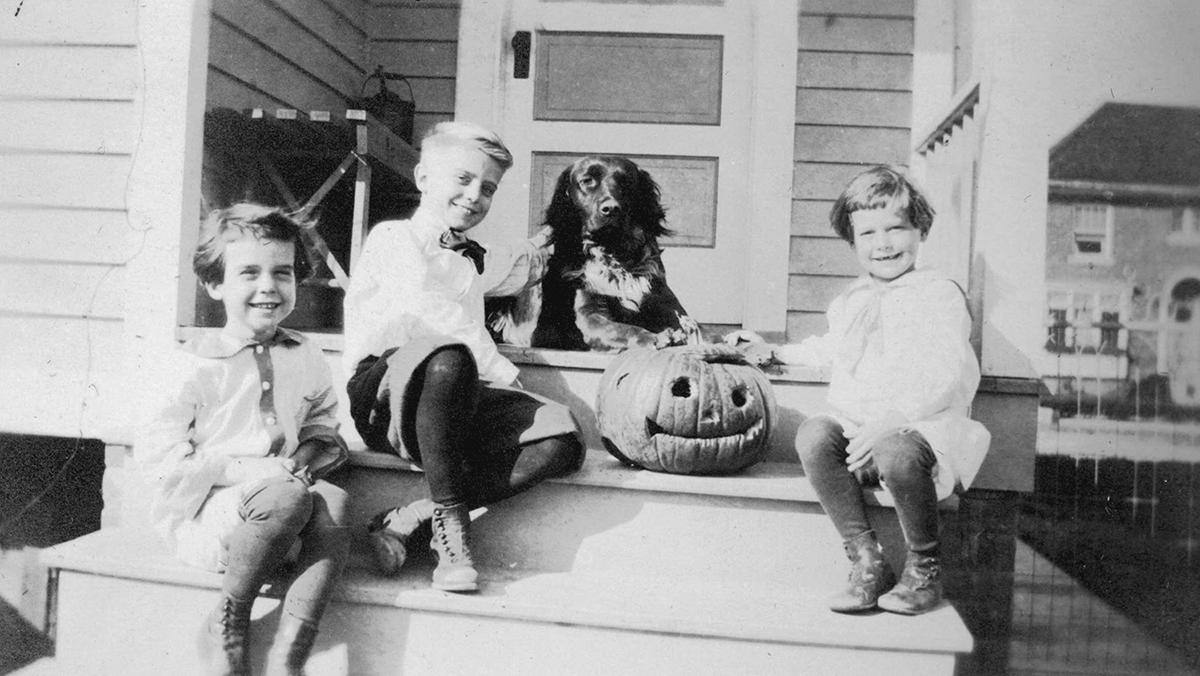
Ed Lansdale (left) in 1914, aged six, with brothers Phil and Ben. (GBPP)
ILLUSTRATIONS

Ed Lansdale (left) in 1914, aged six, with brothers Phil and Ben. (GBPP)
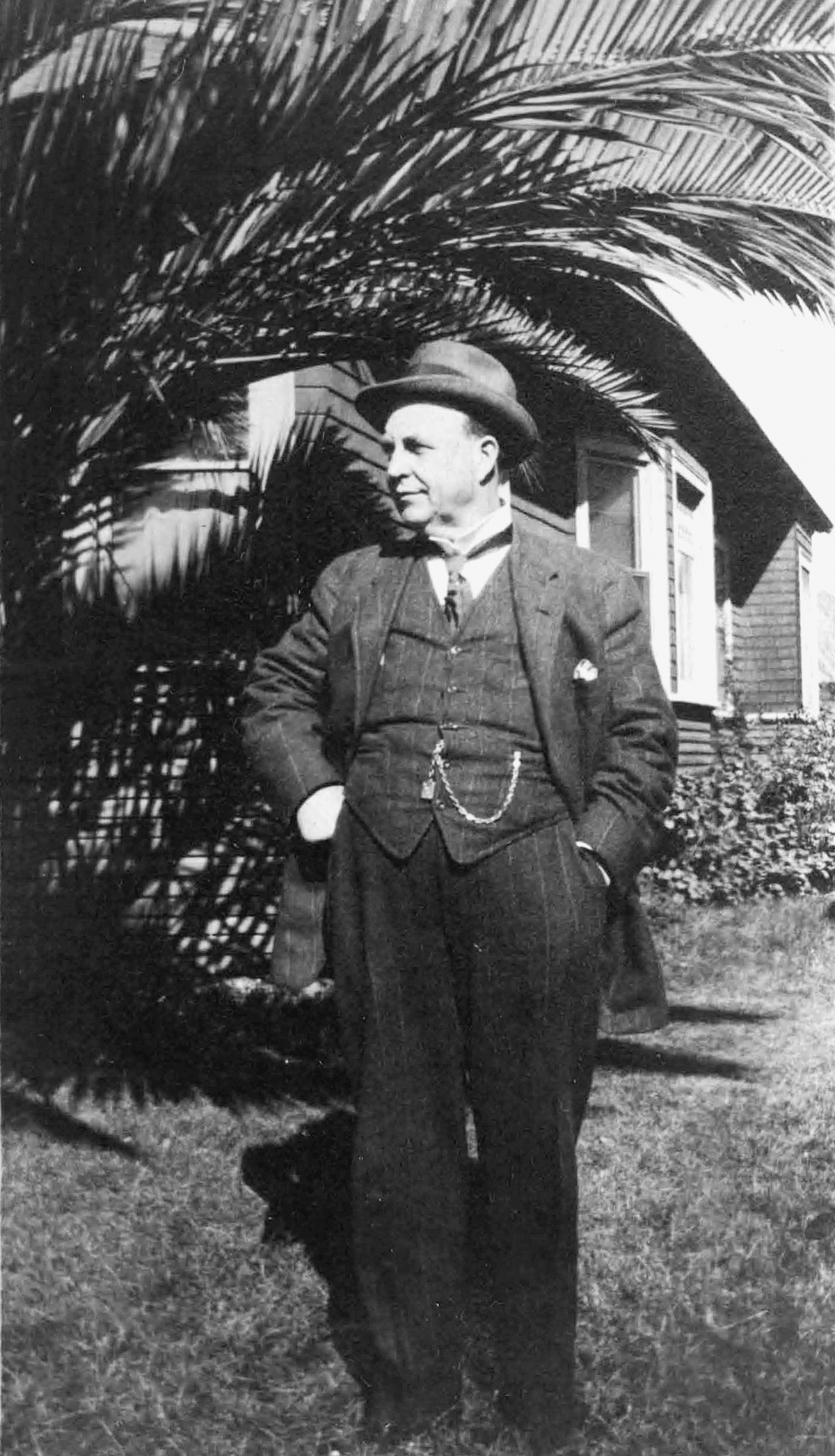
Edward Philips, Lansdale’s maternal grandfather, was a larger-than-life character with little tolerance for polite society. He left a large imprint on his grandson’s personality. (GBPP)
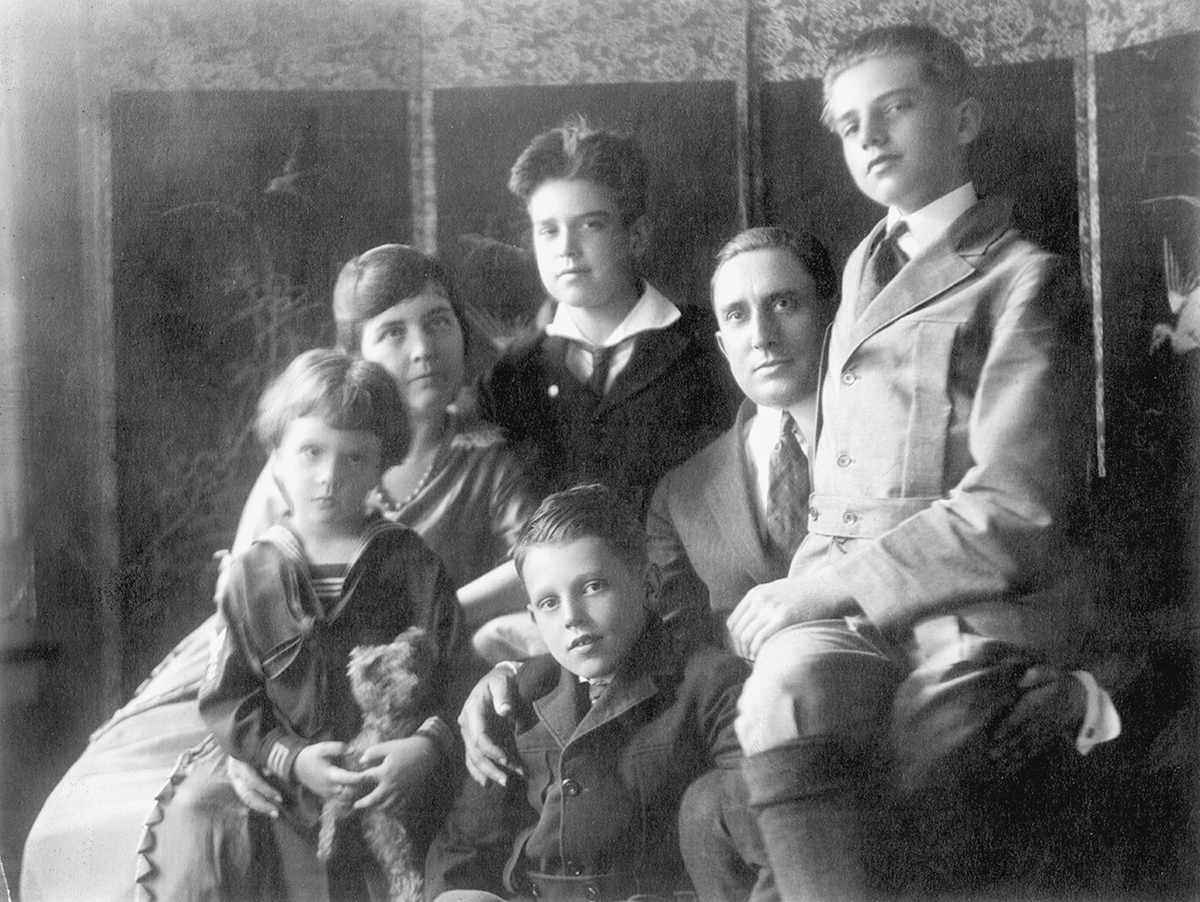
The Lansdale boys with their parents in Bronxville, 1920. Ed is in the middle rear between mother Sadie and father Harry. (GBPP)
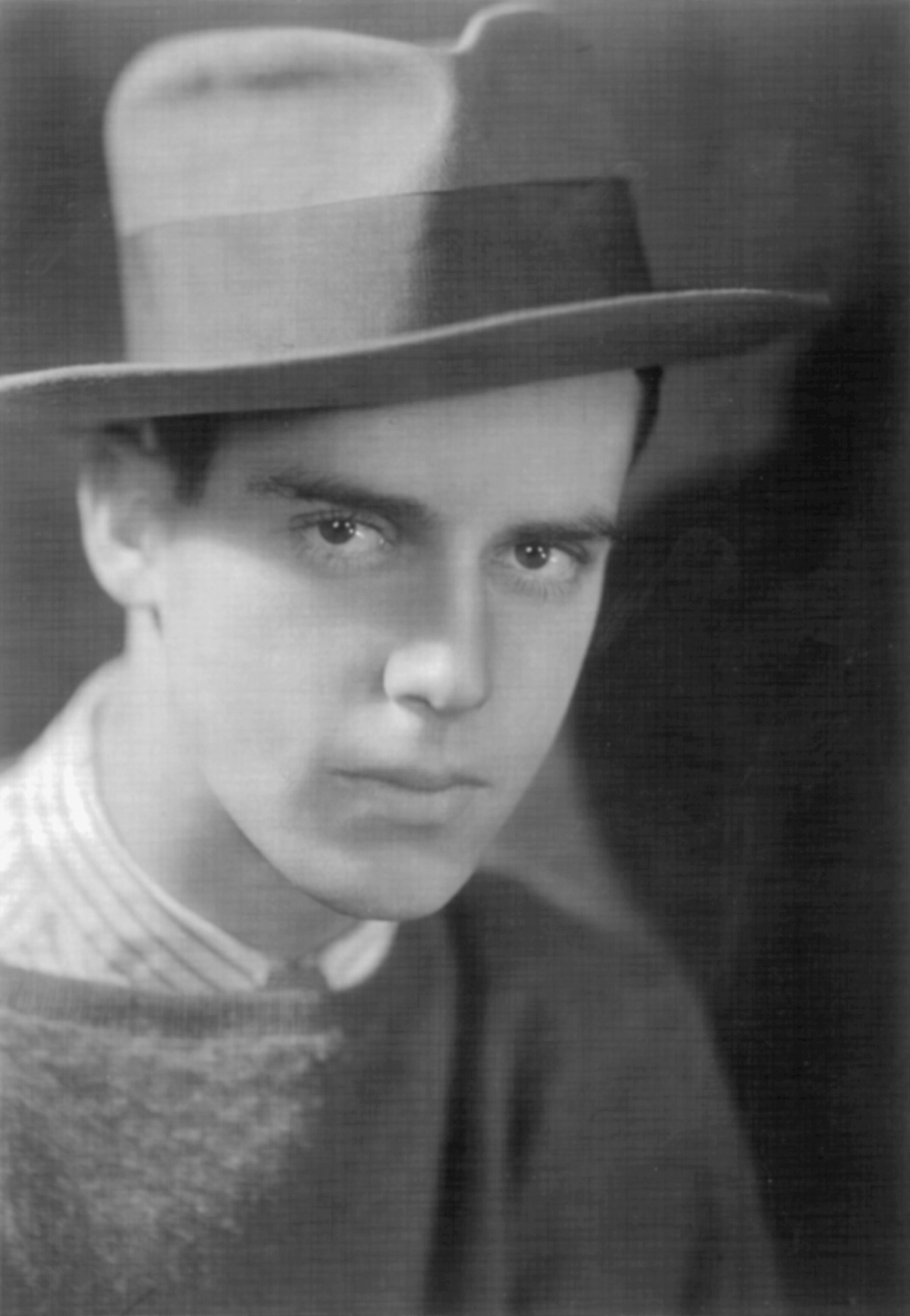
Lansdale as a student at UCLA. He worked as an extra in Hollywood to help pay for college. (GBPP)
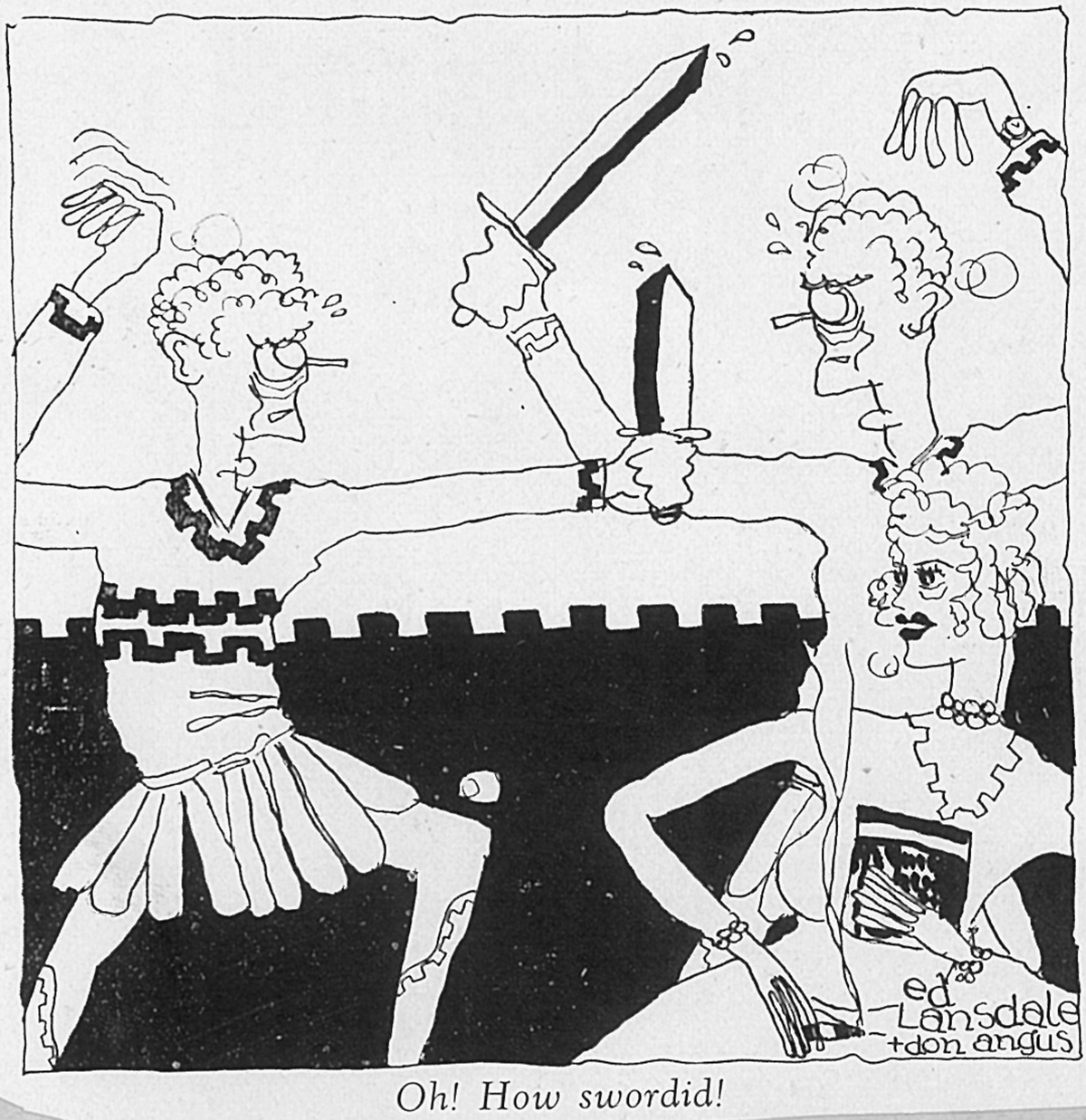
Young Lansdale was an aspiring cartoonist. This is one of the cartoons he drew for UCLA’s satirical newspaper, The Claw. (PCLPP)
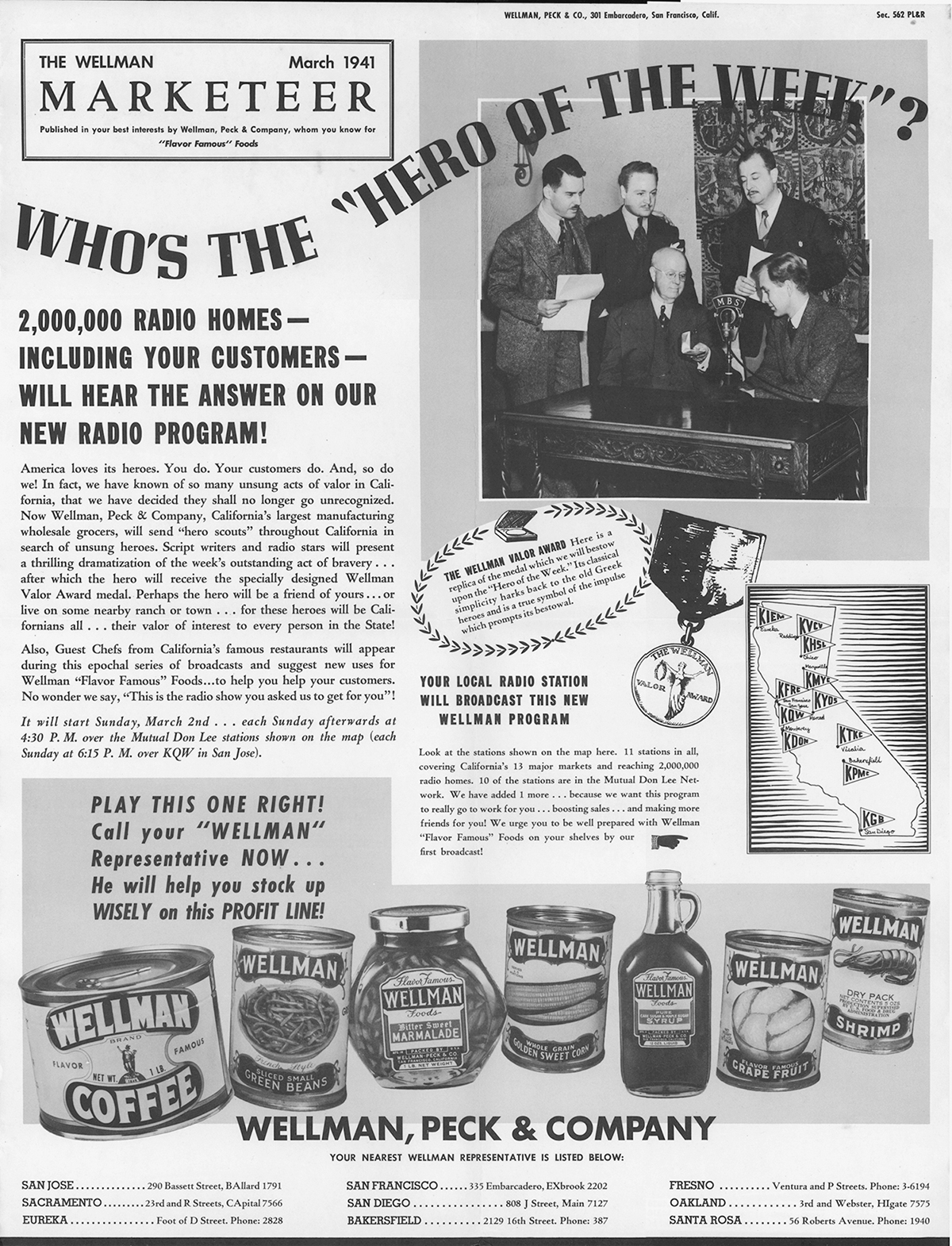
One of the advertisements that Lansdale developed for the Theodore Segall Advertising Agency in San Francisco, 1940. He is at left in the inset photo. (MSFRIC)
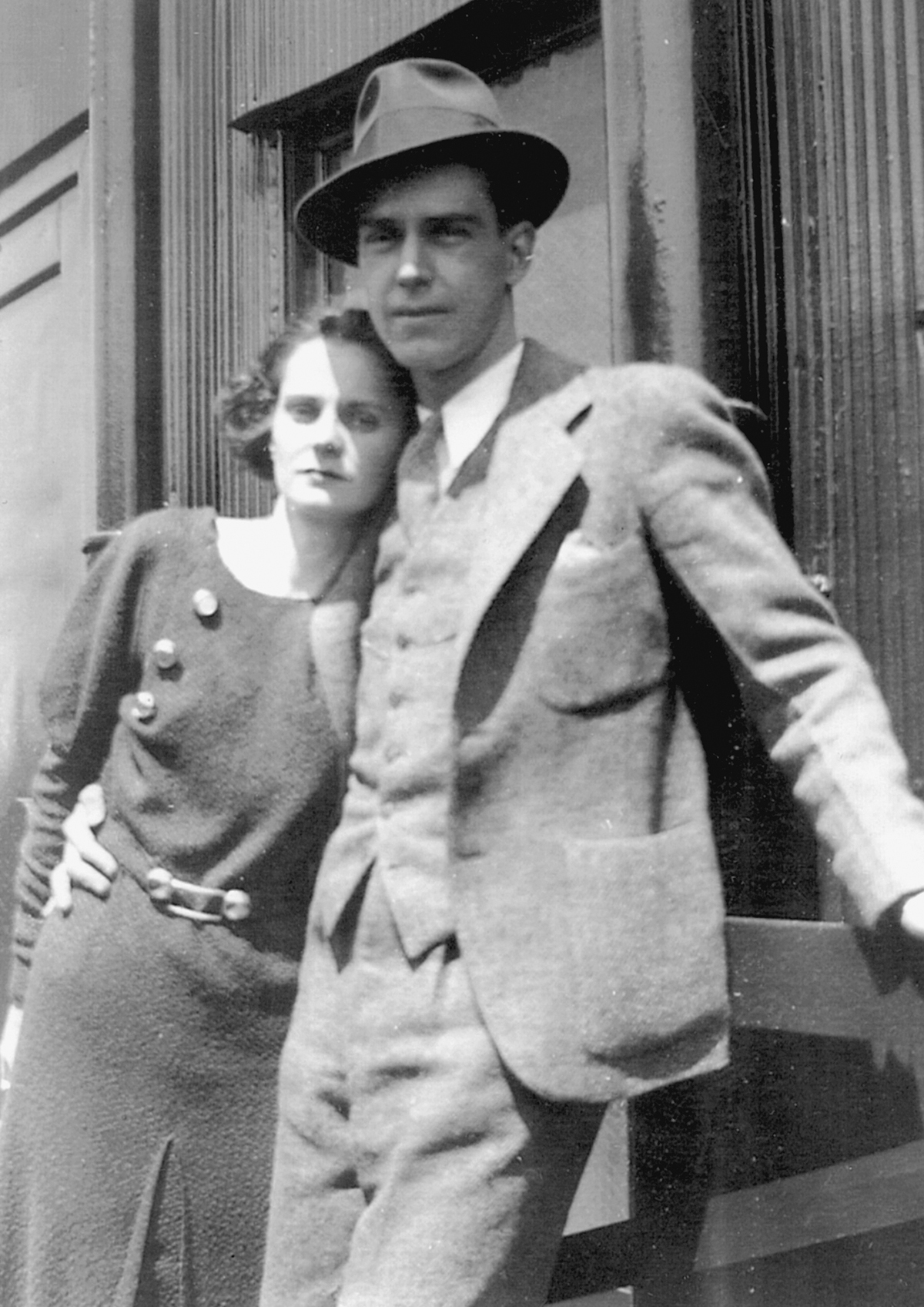
Ed and Helen Lansdale around the time of their marriage in New York, 1933. Shared family secrets helped to bring them together amid the misery of the Great Depression. (ECLPP)
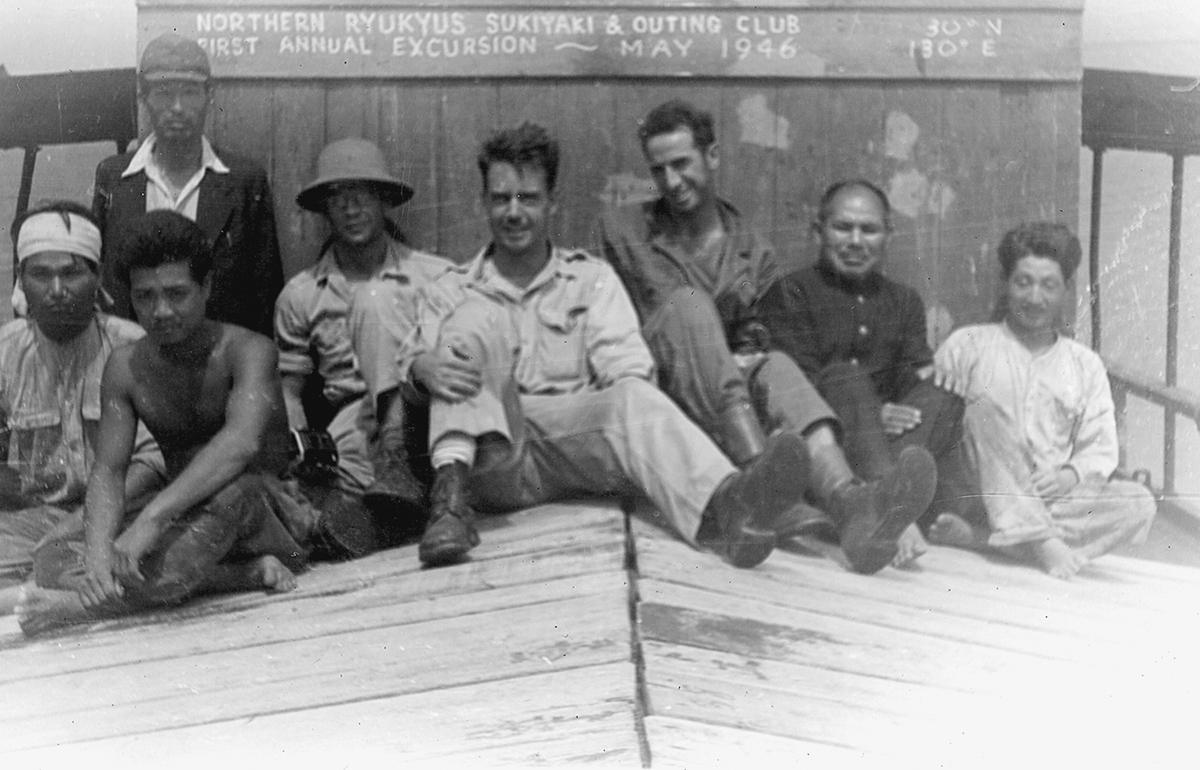
Major Lansdale (center) on a “very ratty, dirty and ancient” boat exploring the Ryukyu Islands, 1946. After spending the war years working for the OSS in the United States, this was his initiation to the heady realm of nation building. (HI)
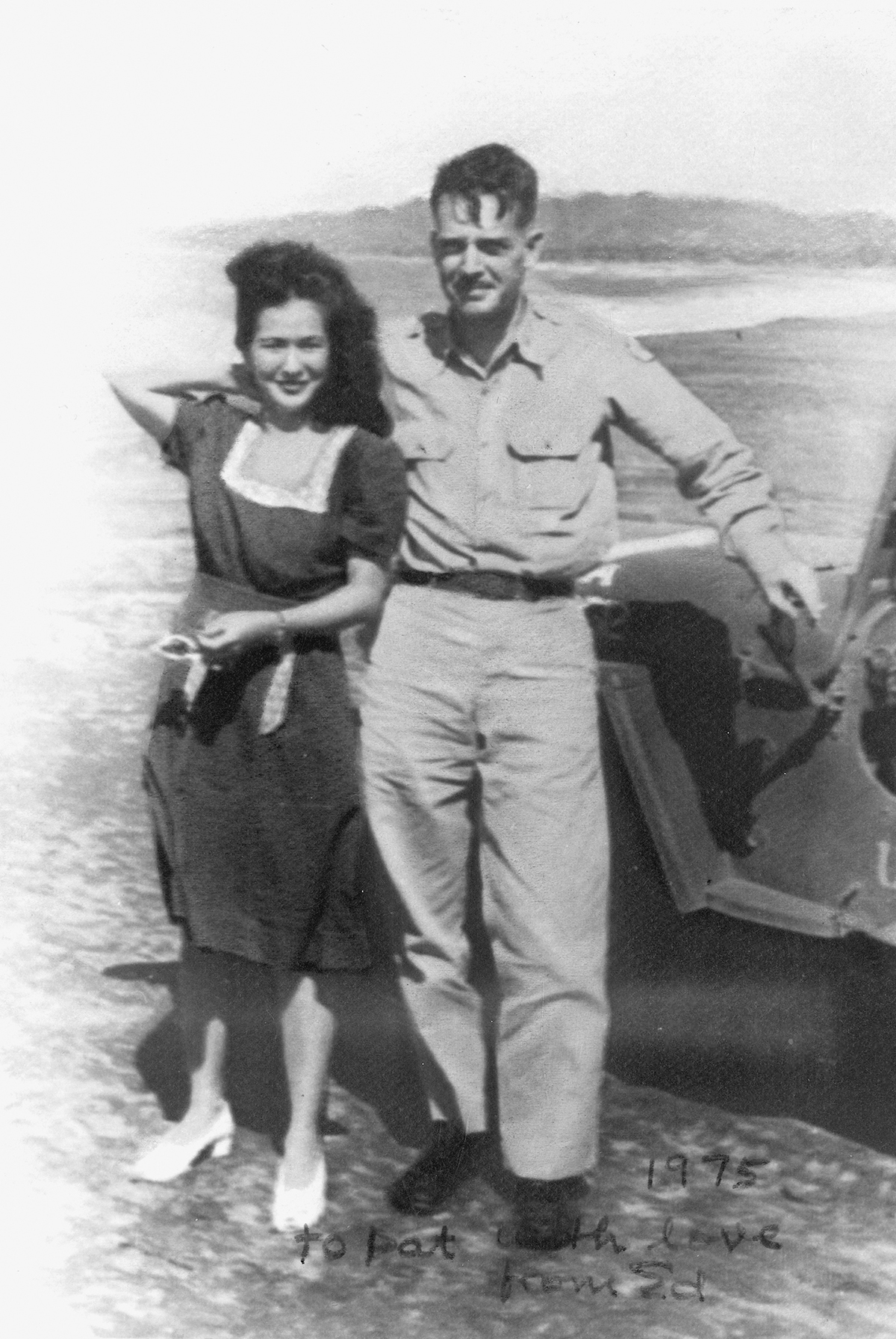
Pat Kelly and Lansdale on a beach, Lingayen Gulf in the Philippines, 1946, shortly after they met. (PYPP)
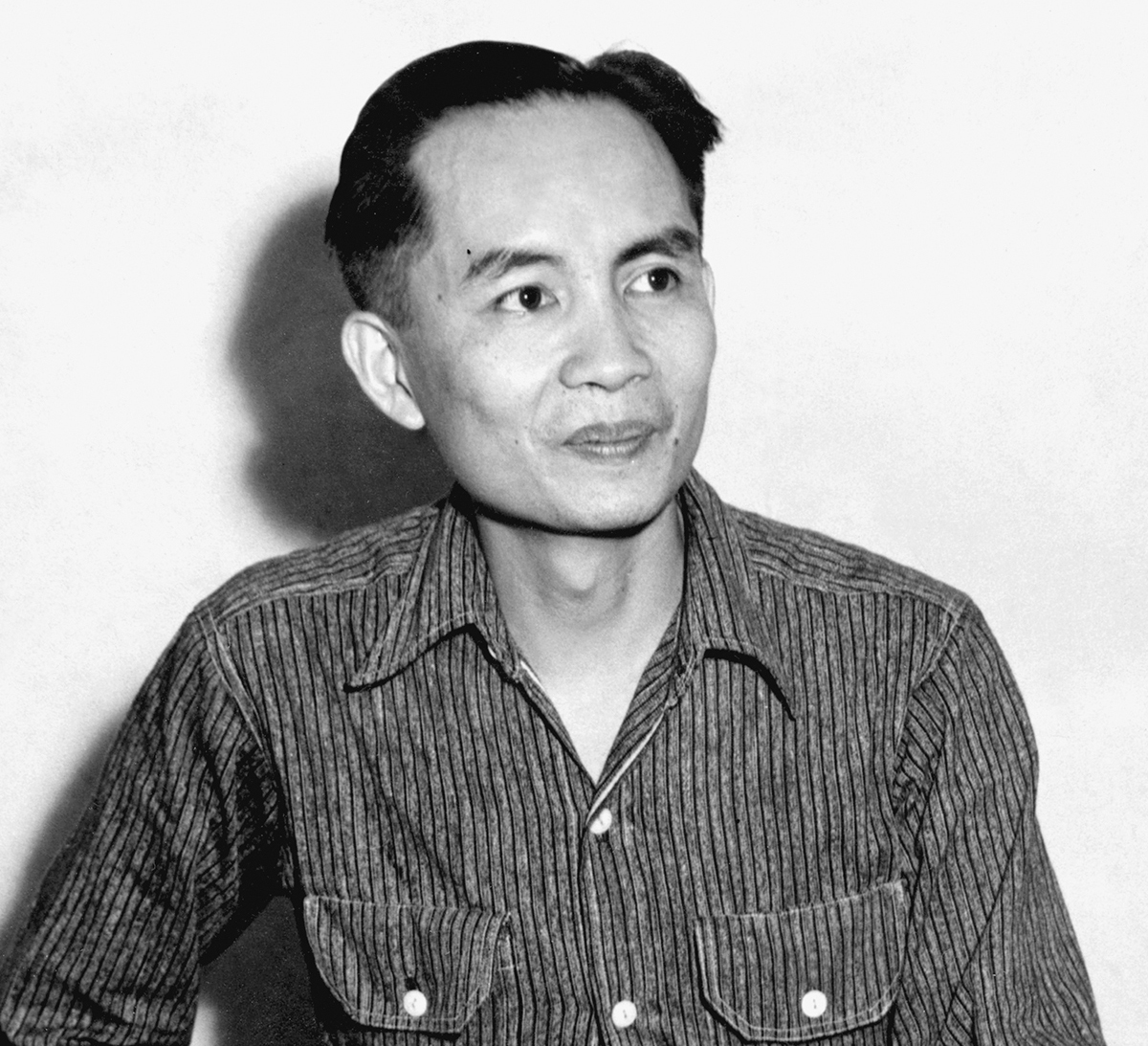
Huk military leader Luis Taruc. With Pat Kelly’s help, Lansdale tried repeatedly to meet him and almost lost his life in the attempt.(Getty)
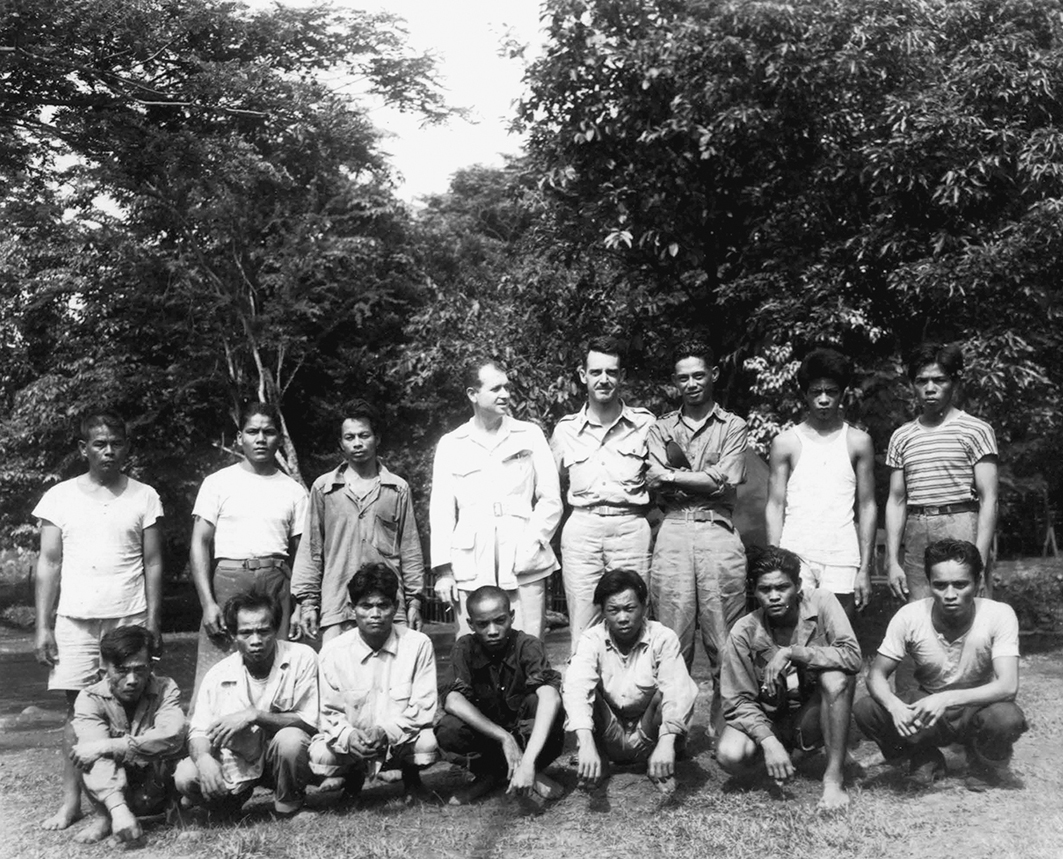
AP reporter Spencer Davis (left), Lansdale, and Major Napoleon Valeriano of the Philippine army (right), with captured Huks, July 18, 1947. (MSFRIC)

Ed and Helen Lansdale leaving the Philippines in 1948 with their boys, Pete and Ted. After three years, Lansdale could boast that that he was known on a first-name basis by everyone from the president of the republic “down to farmers in [the] provinces.” (ECLPP)
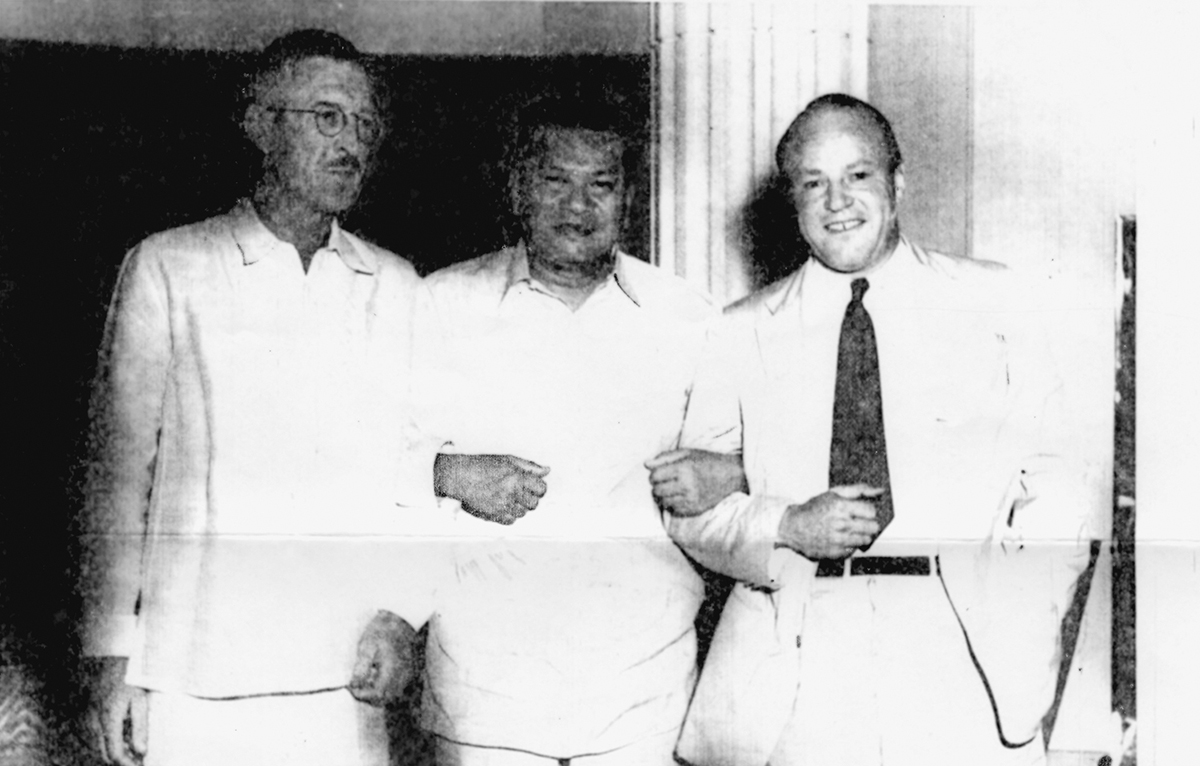
Lansdale’s eccentric deputy, Charles T. R. “Bo” Bohannan (left), and his superior, CIA operations chief Frank Wisner (right), with Ramon Magsaysay. (HI)
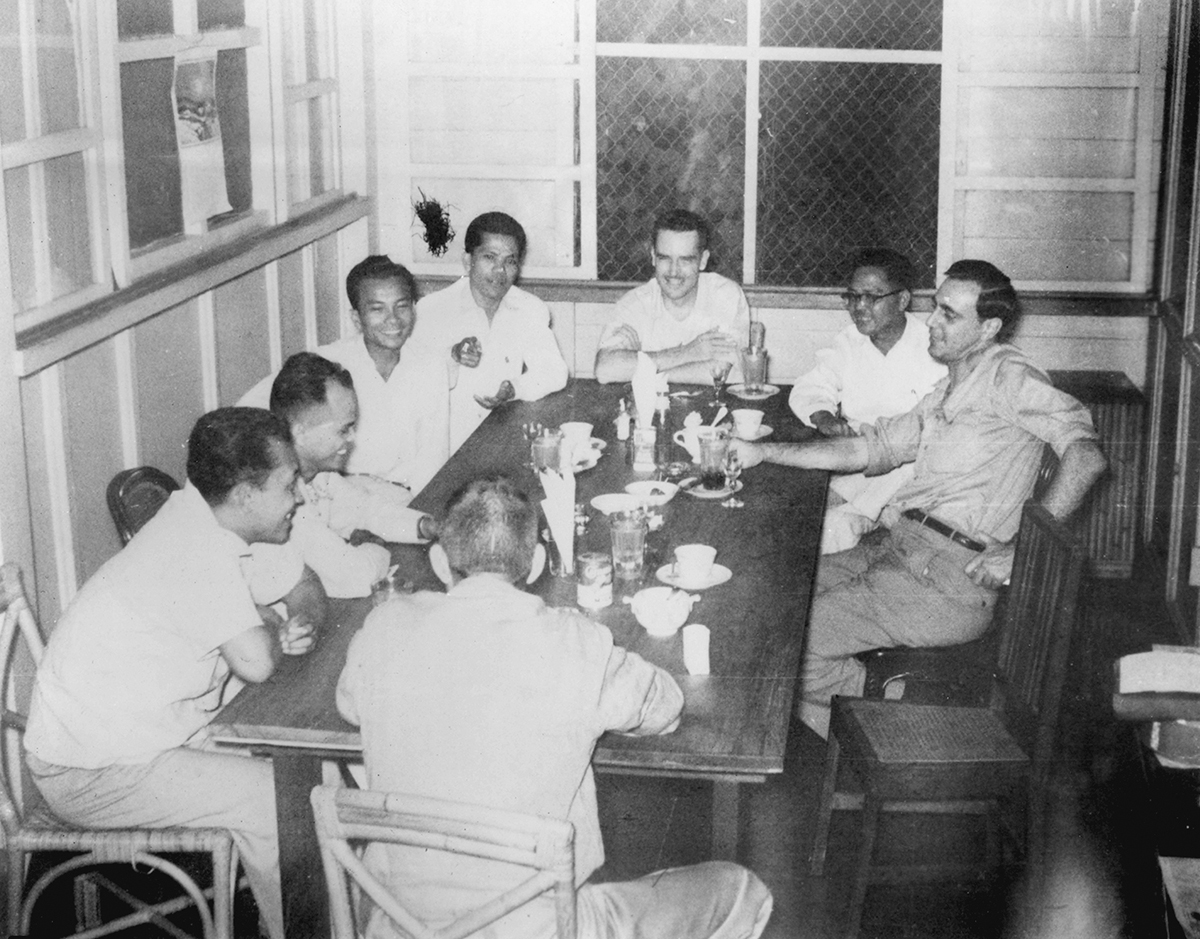
A typical coffee klatsch at Lansdale’s bungalow in Manila, December 1950. He is at the head of the table; New Yorker correspondent Robert Shaplen is at right; Bohannan has his back to camera. The ideas generated at such informal gatherings catalyzed the anti-Huk campaign. (MSFRIC)
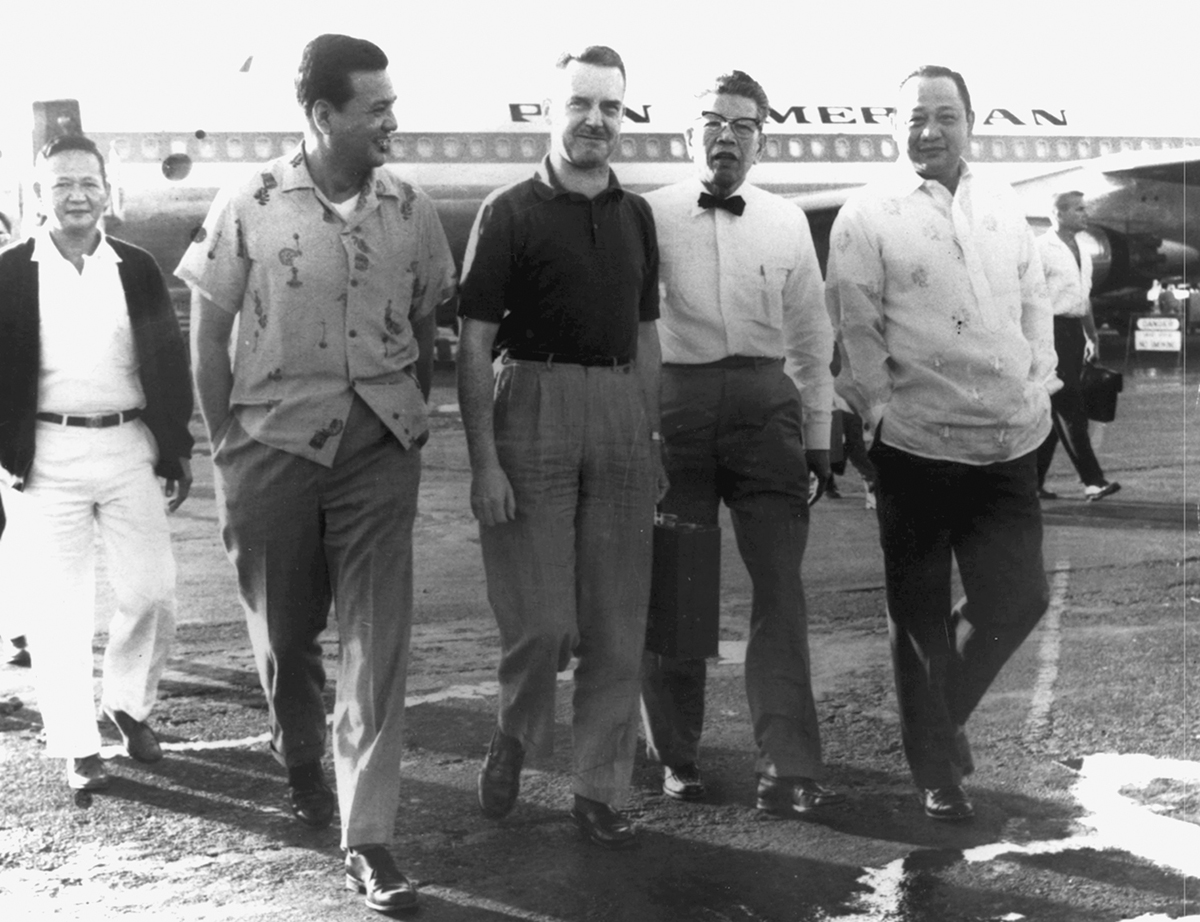
Lansdale (center) and some of his closest associates in the Philippines, December 1960. Left to right: Dario Arellano, Manny Manahan, Johnny Orendain, Oscar Arellano. He used them to help his nation building efforts in Vietnam. (MSFRIC)
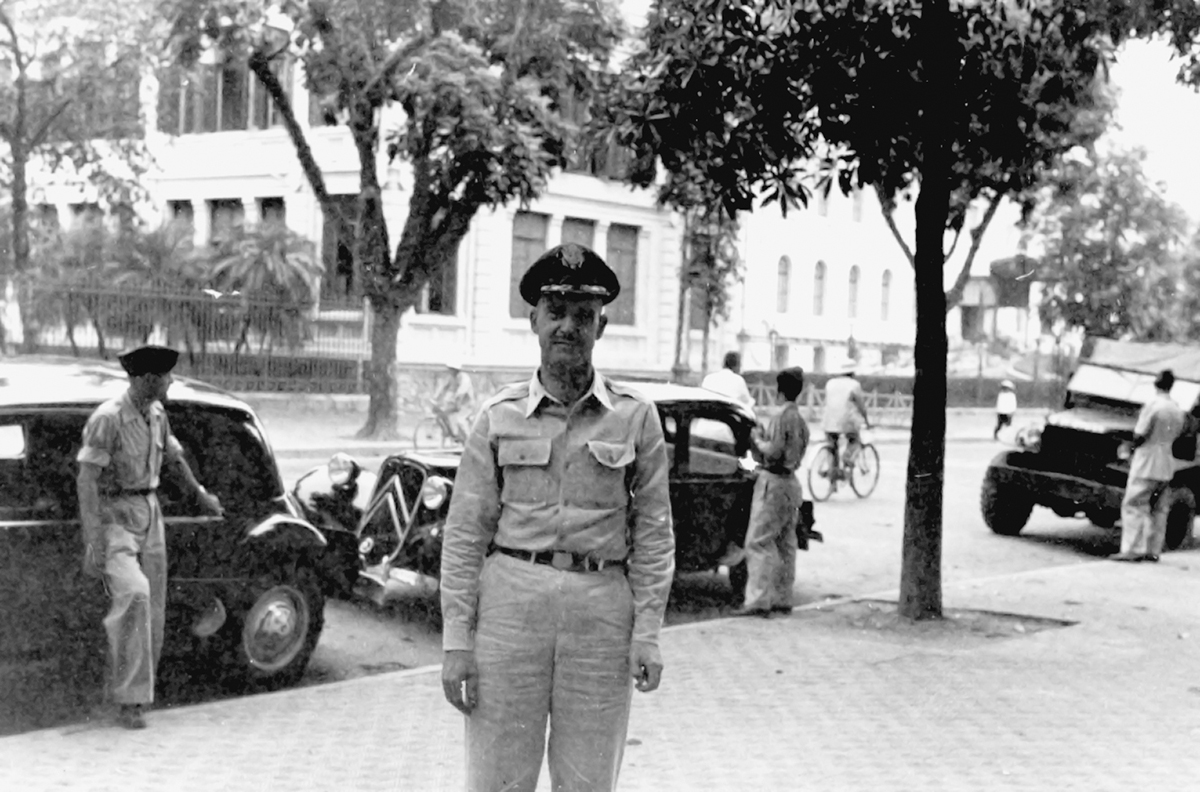
Lansdale in Hanoi, June 1953, on his first trip to Indochina. Like Graham Greene and many other Westerners, he was instantly smitten with this alluring country. (MSFRIC)
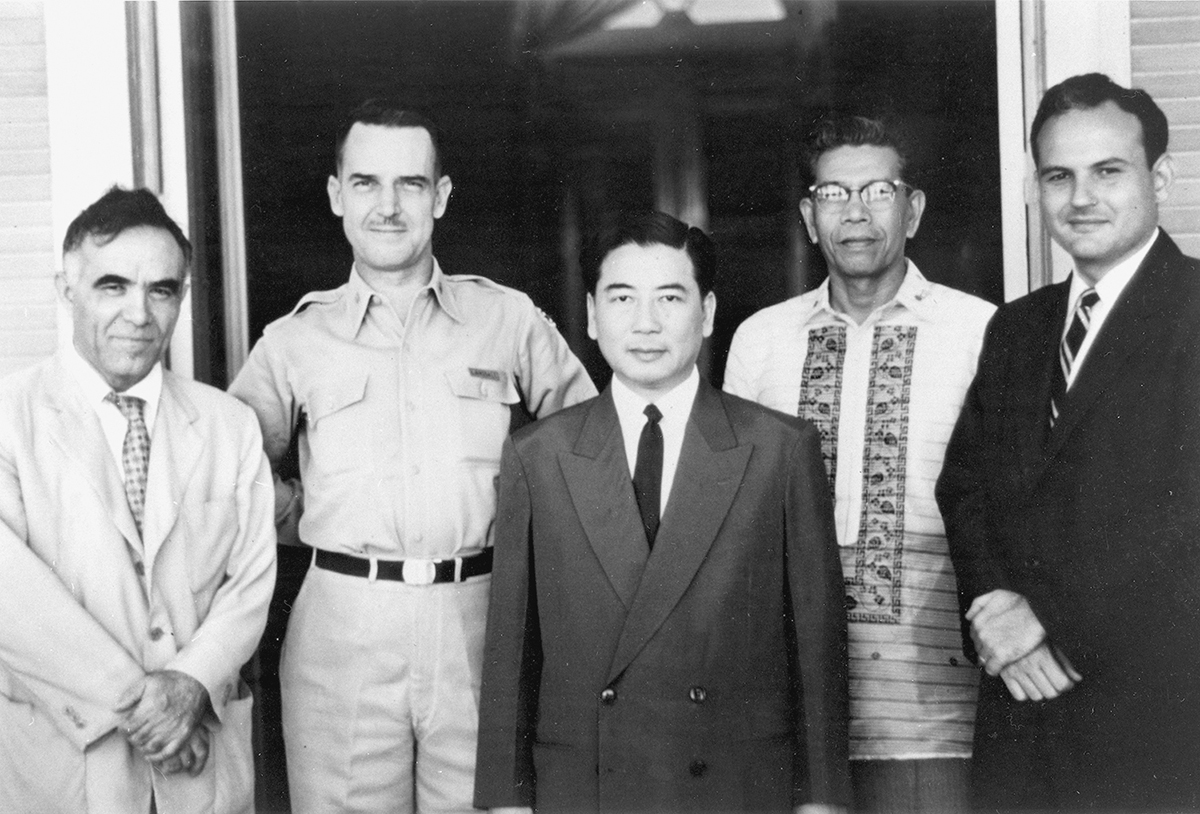
Lansdale with Ngo Dinh Diem, the shy, bookish nationalist politician who was appointed prime minister in 1954. Together they created the state of South Vietnam. (HI)
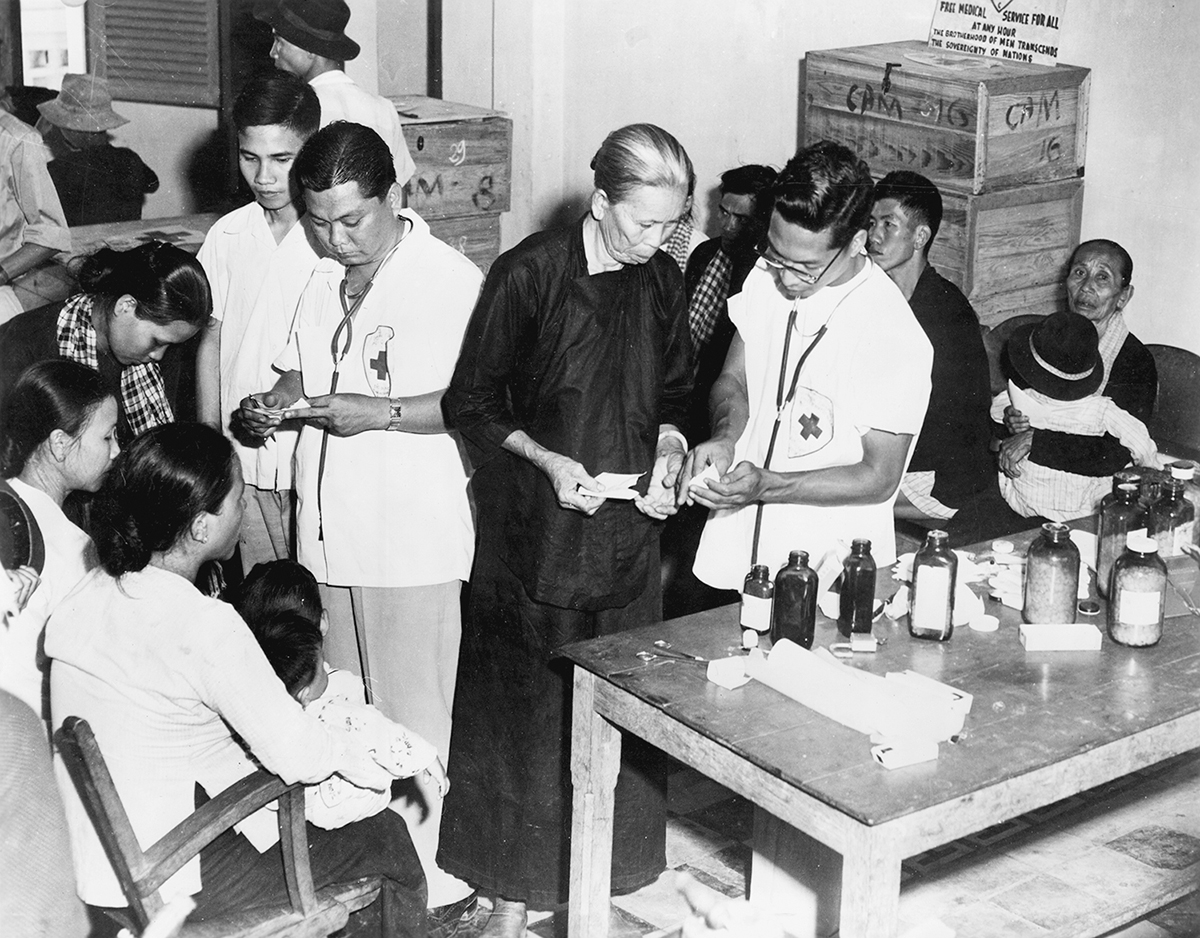
Filipino doctors and nurses treating Vietnamese civilians. Lansdale created Operation Brotherhood with covert CIA funding as one of his signature civic-action initiatives. (HI)
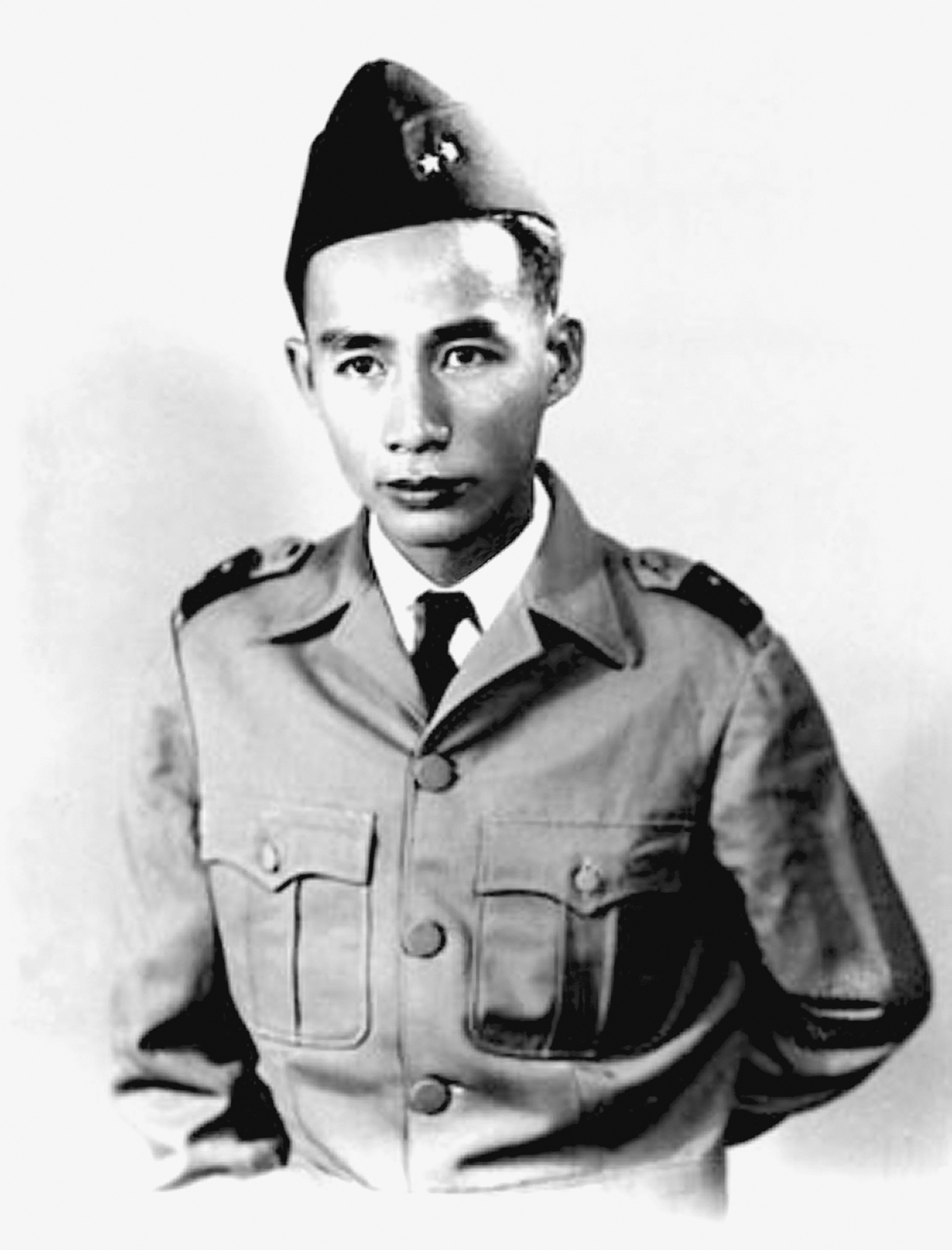
Trinh Minh Thé, the controversial Cao Dai warlord whom the French reviled as a terrorist and many Vietnamese saw as a freedom fighter. Lansdale became so close to him that he stood in for him when his son was married years after his death. (Image Works)
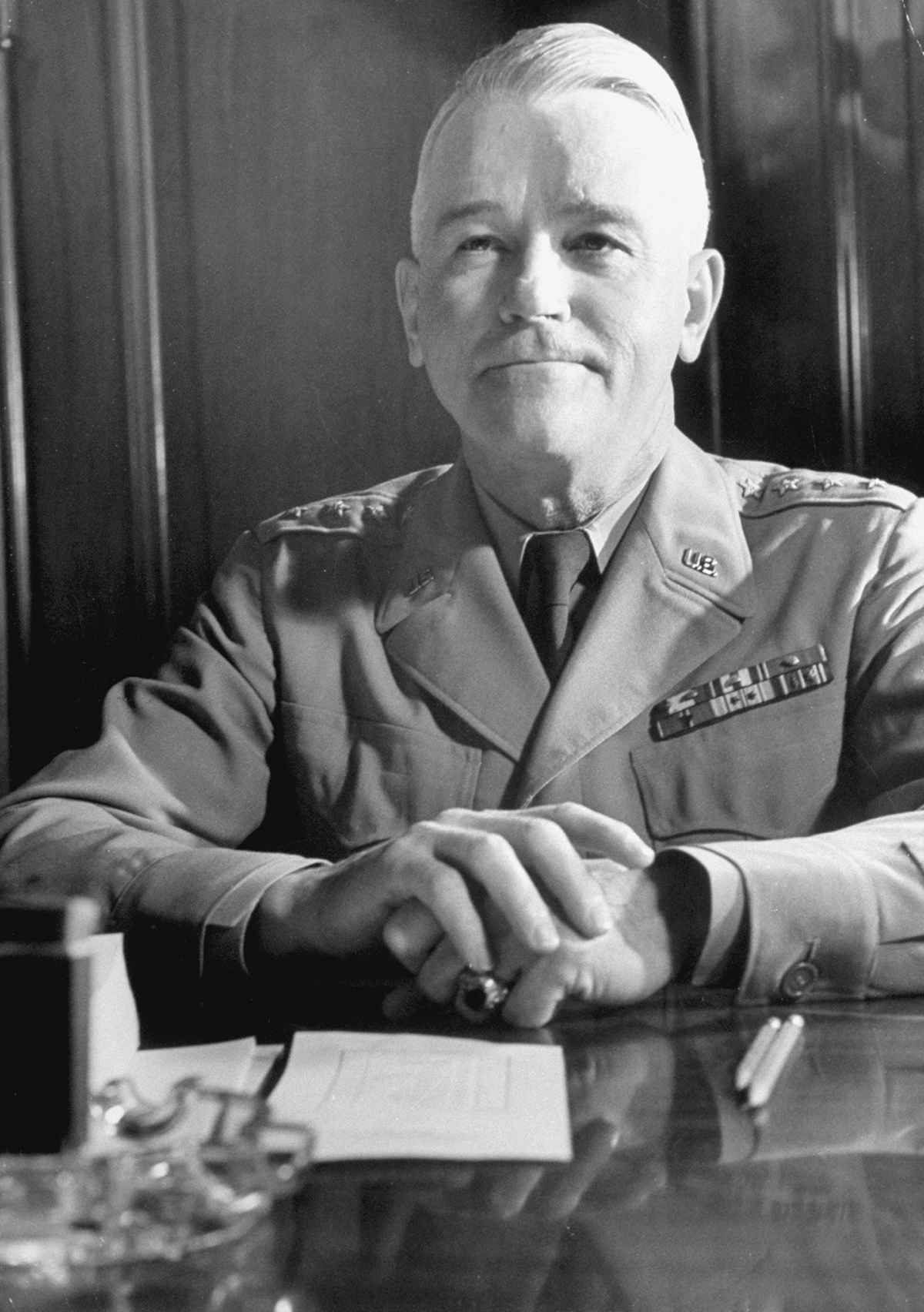
General J. Lawton “Lightning Joe” Collins, a former U.S. Army chief of staff who clashed with Lansdale during his tenure as ambassador to South Vietnam, 1954–55. (Getty)
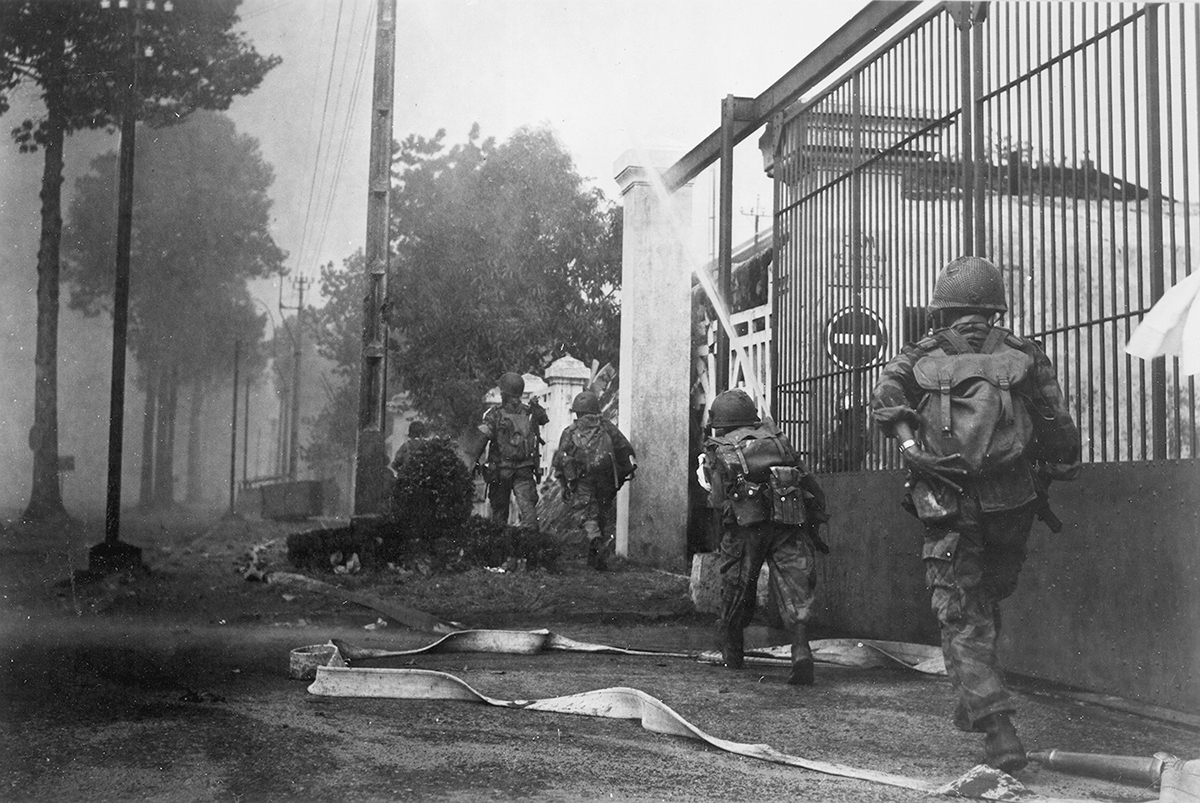
South Vietnamese troops advancing during the battle of Saigon, April 1955, pitting Diem’s forces against three French-backed sects—the Cao Dai, the Hoa Hao, and the Binh Xuyen. (HI)
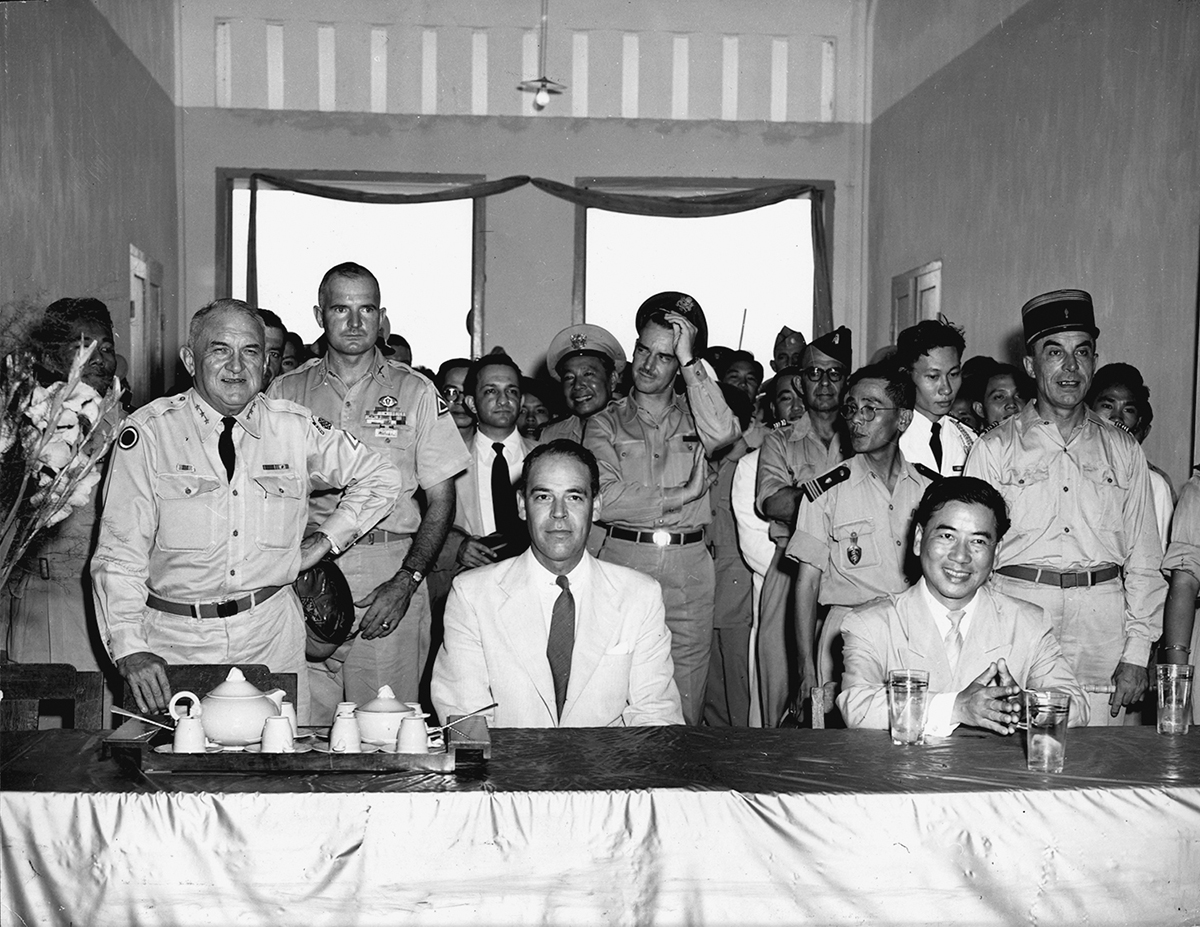
General John W. “Iron Mike” O’Daniel, the commander of the U.S. Military Assistance Advisory Group (left), Ambassador G. Frederick Reinhardt (center), Diem (right), and Lansdale (behind Reinhardt). (MSFRIC)
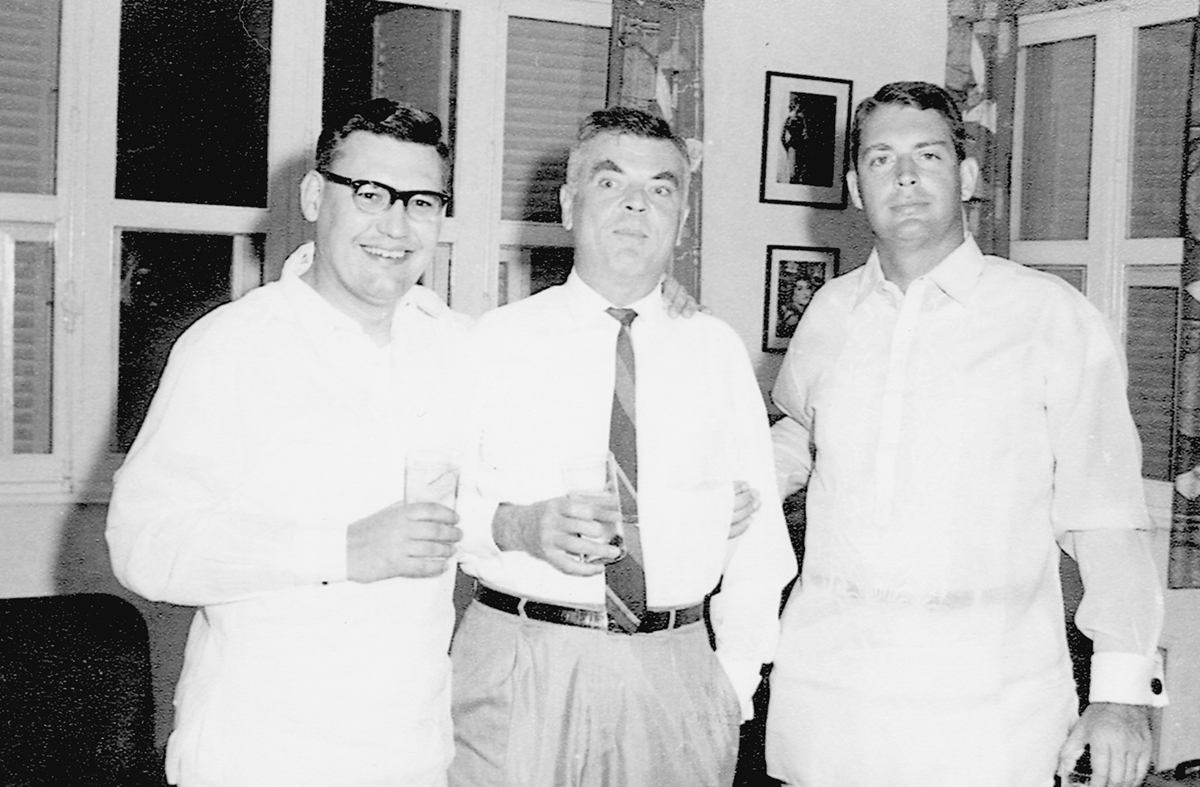
Three members of Lansdale’s Saigon Military Mission. Left to right: CIA officers David Smith, Lou Conein, and Rufus Phillips. Conein would later become infamous as the architect of the 1963 anti-Diem coup. (RPPP)
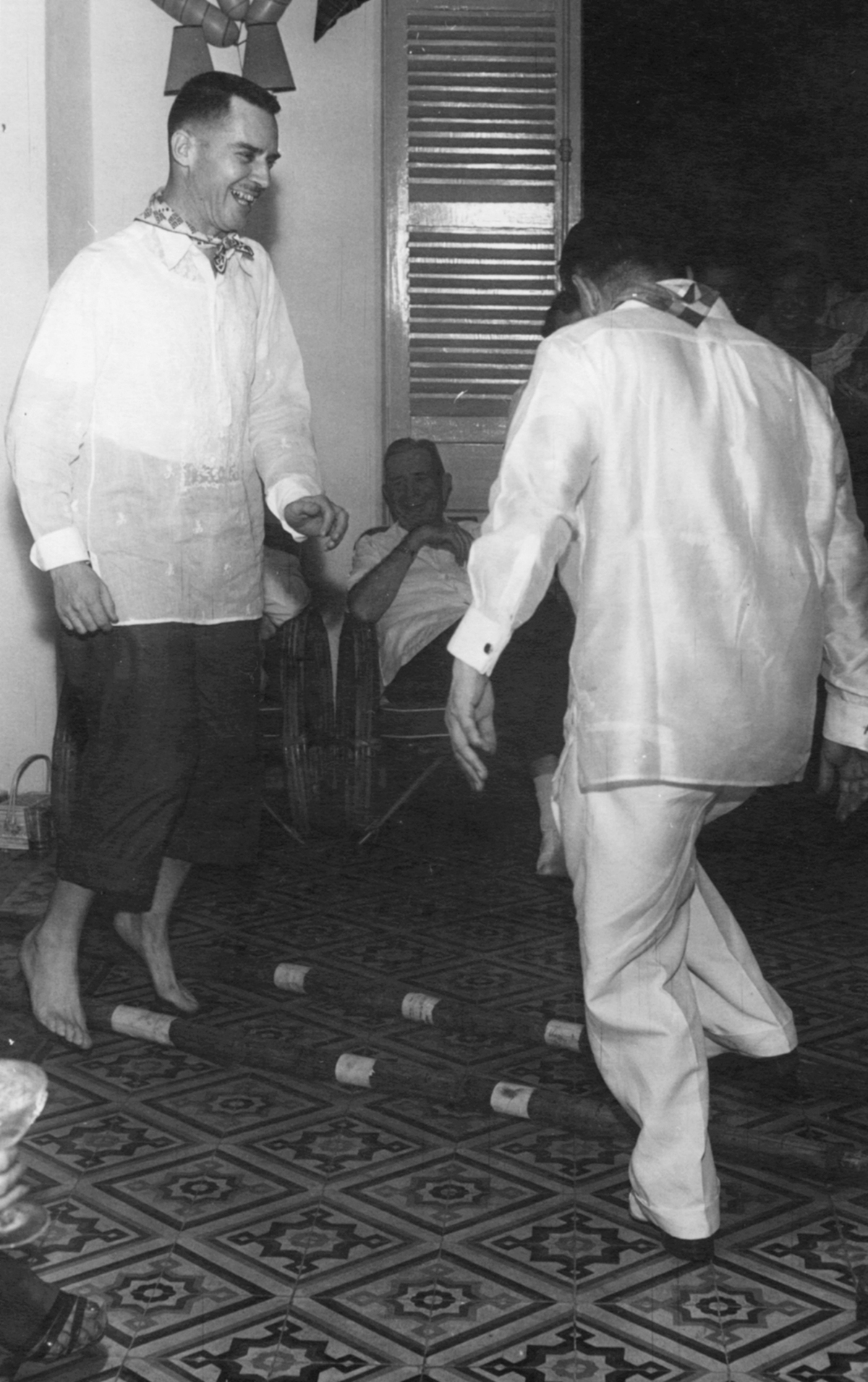
A regular party-giver, Lansdale used the tinikling, a Philippine pole dance, to break down social barriers. This party was in 1956 at his Rue Duy Tan villa in Saigon. (HI)
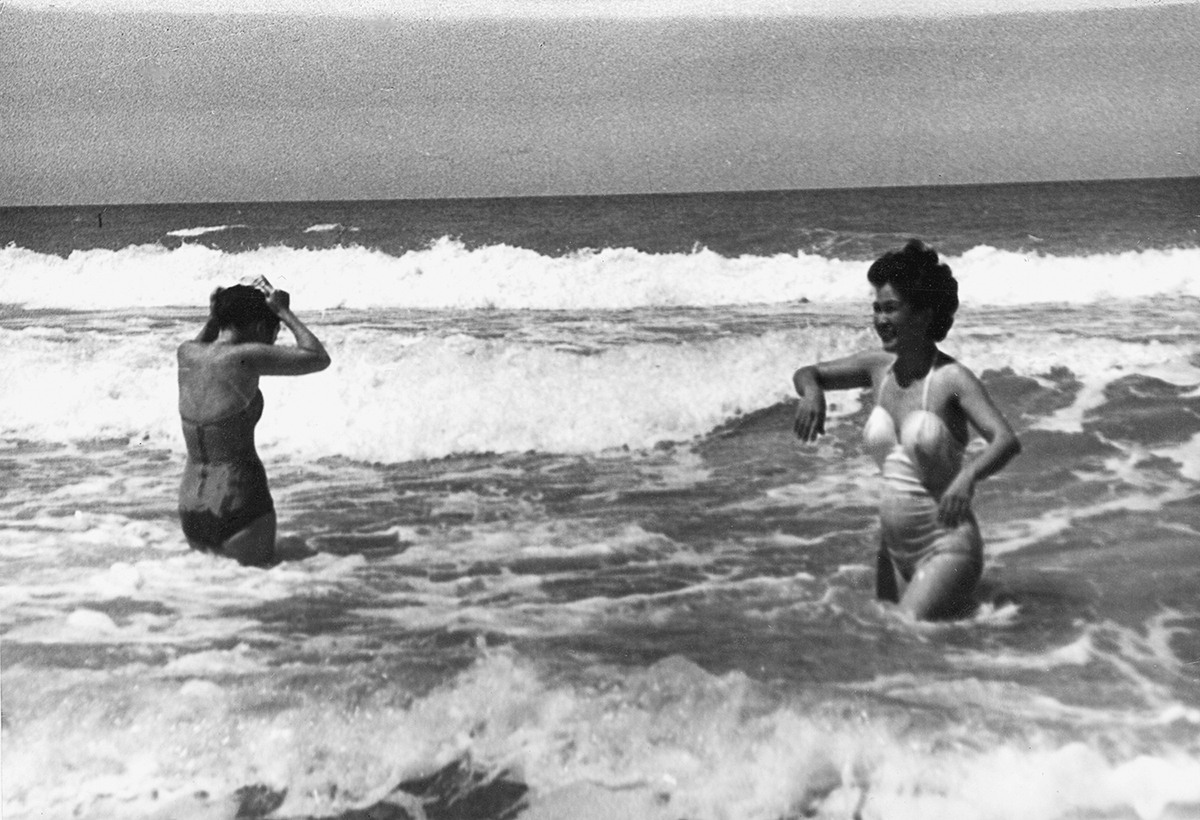
Pat Kelly (right) visited Lansdale in Vietnam and, in 1956, went swimming with Madame Nhu (left). (HI)
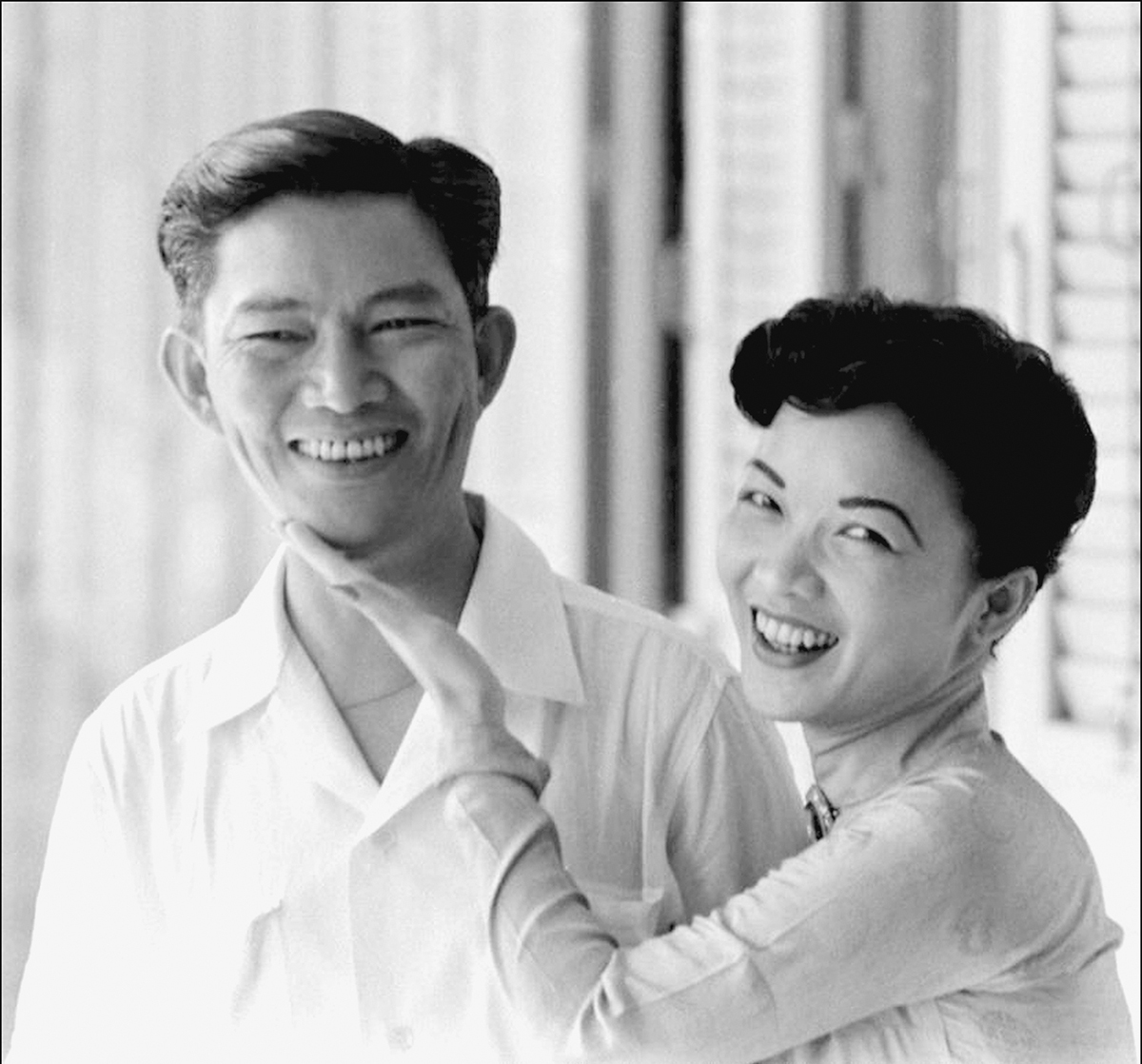
Ngo Dinh Diem’s conspiratorial brother, Ngo Dinh Nhu, and his wife, Madame Nhu, who served as first lady for the bachelor president. After Lansdale left Vietnam at the end of 1956, their hold on Diem increased—and conflict with Washington grew. (Image Works)

One of Lansdale’s greatest propaganda coups was turning Graham Greene’s anti-American novel The Quiet American into a pro-American movie. He was often identified, wrongly, as the model for the naïve protagonist, Alden Pyle. (Image Works)
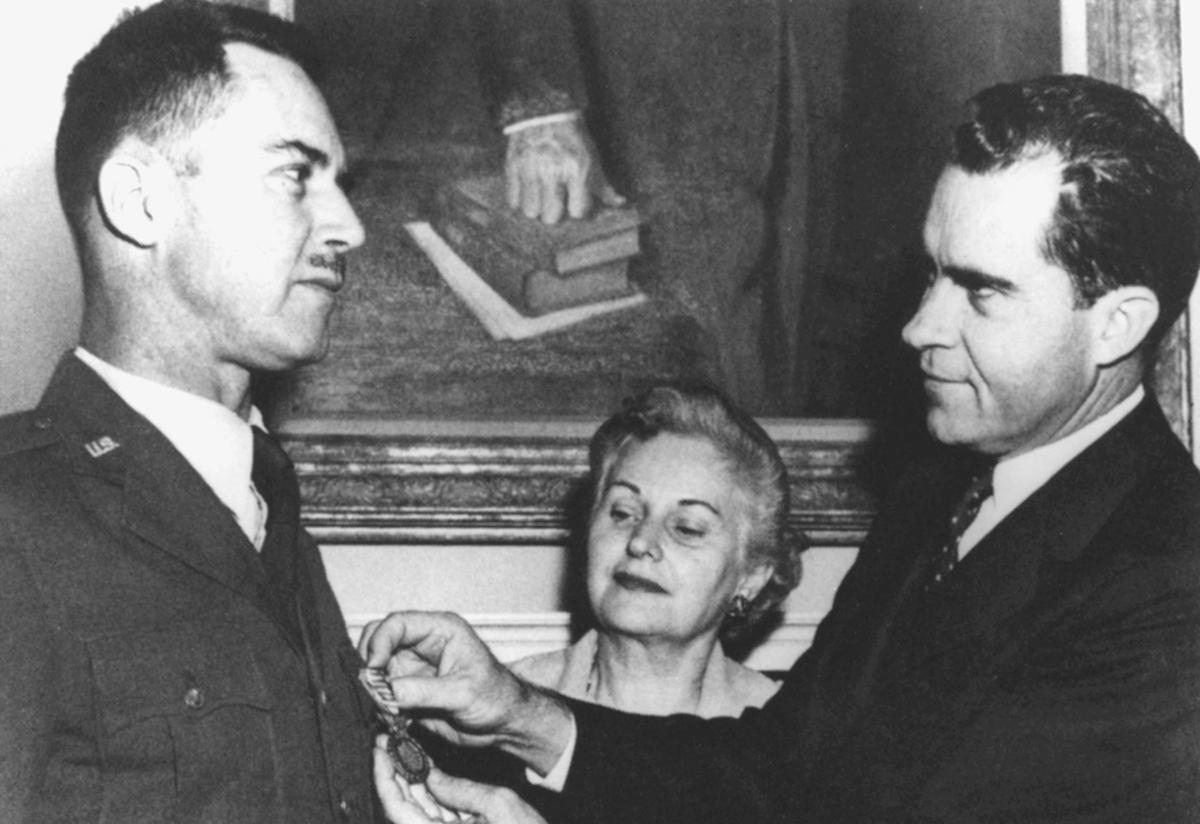
Vice President Nixon awards Colonel Lansdale a medal (possibly the National Security Medal for intelligence work) in the mid-1950s as Helen Lansdale looks on. Nixon championed Lansdale’s work as vice president but not as president. (MSFRIC)
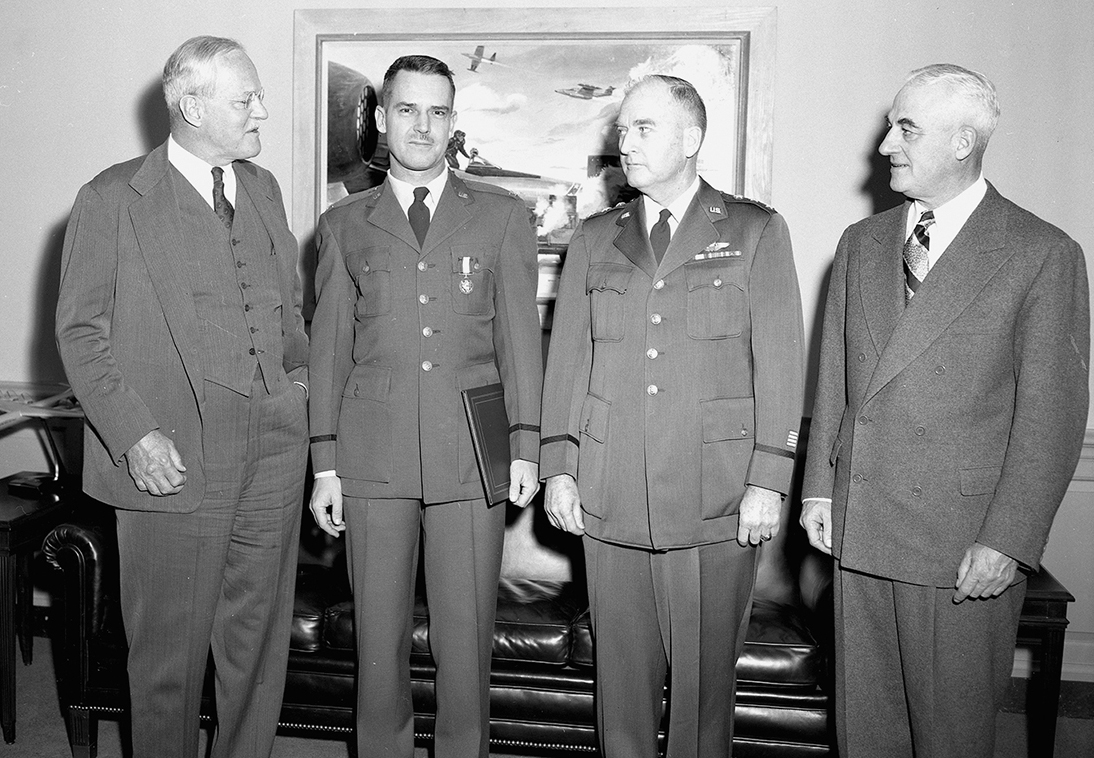
Lansdale with, left to right, CIA director Allen Dulles, the CIA’s deputy director, Lieutenant General Charles Cabell, and the Air Force vice chief of staff, General Nathan Twining. Allen and his brother, Secretary of State John Foster Dulles, were Lansdale’s greatest supporters in Washington. (MSFRIC)
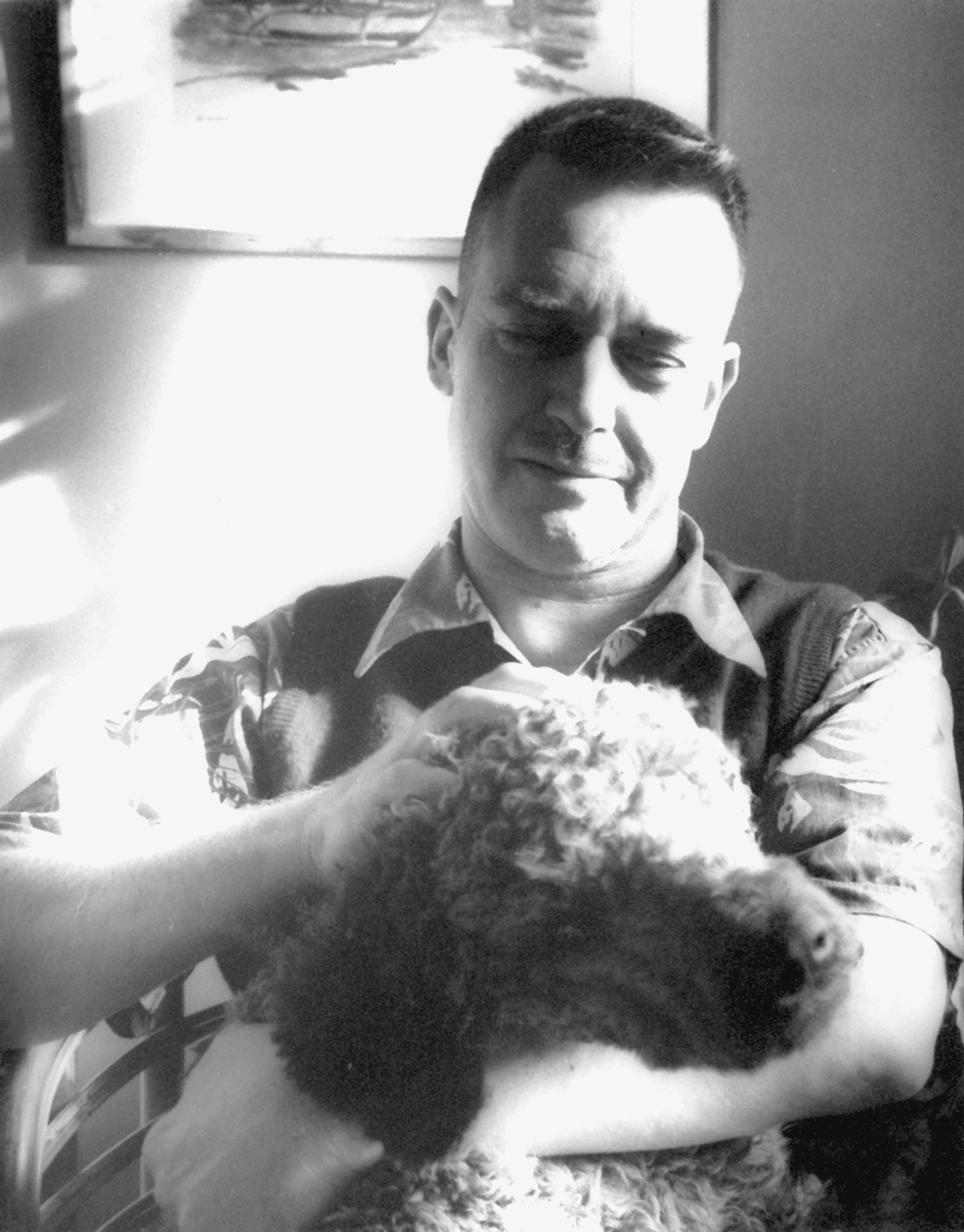
Lansdale at home in Washington with his poodle, Koko, late 1950s. (ECLPP)
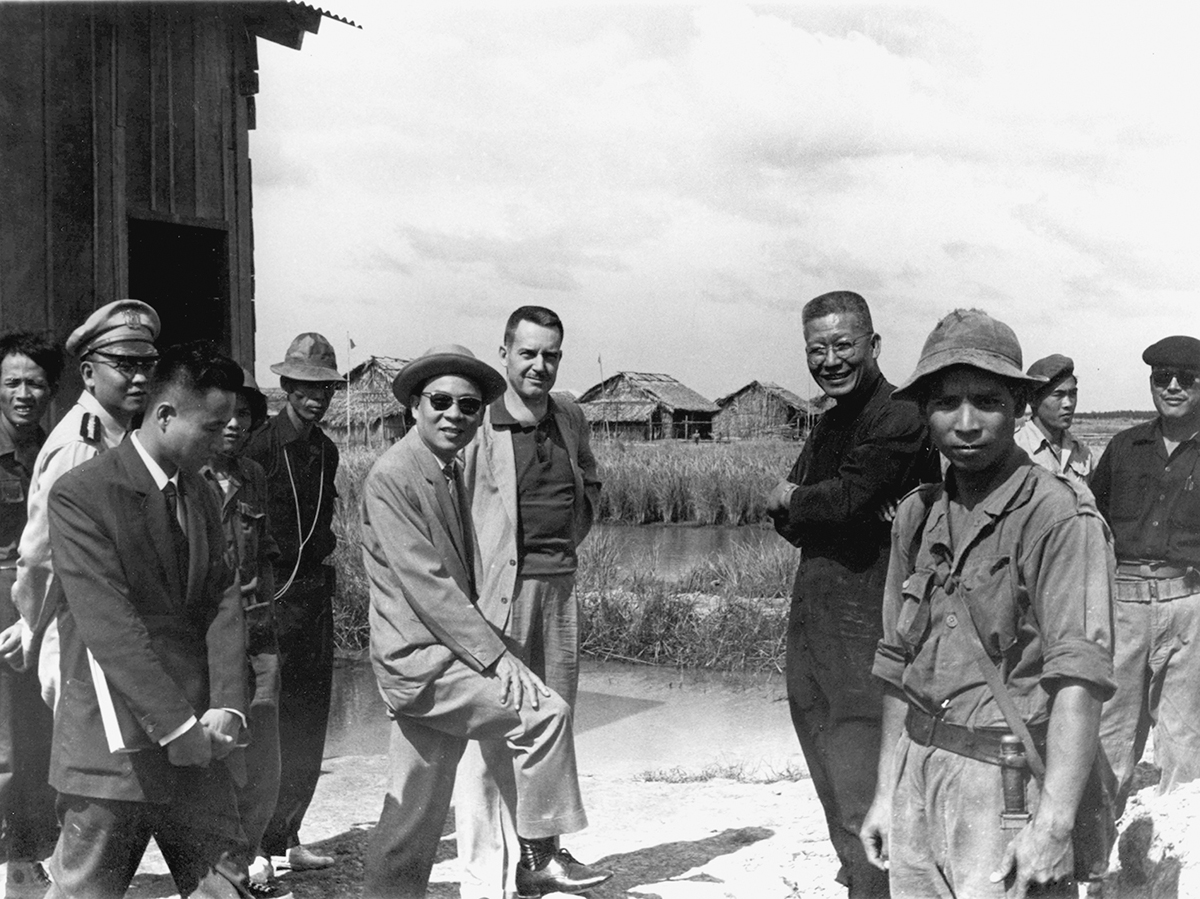
Lansdale in early 1961 visiting the remote village of Binh Hung, defended by the Sea Swallows militia led by the “fighting priest,” Father Nguyen Loc Hoa (in glasses and dark uniform). (MSFRIC)
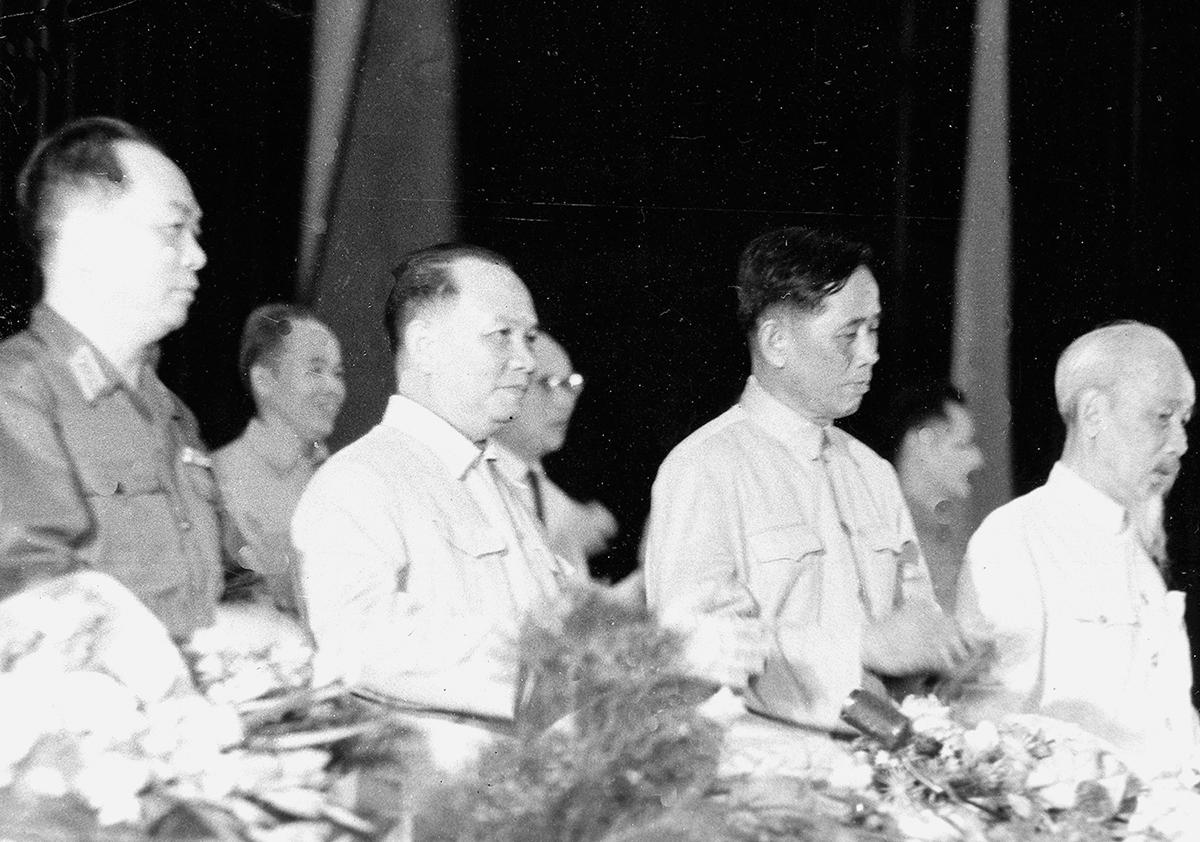
The leaders of North Vietnam, left to right: Vo Nguyen Giap, Truong Chinh, Le Duan, and Ho Chi Minh. The little-known Le Duan was the driving force behind the North’s war on South Vietnam. (AP)
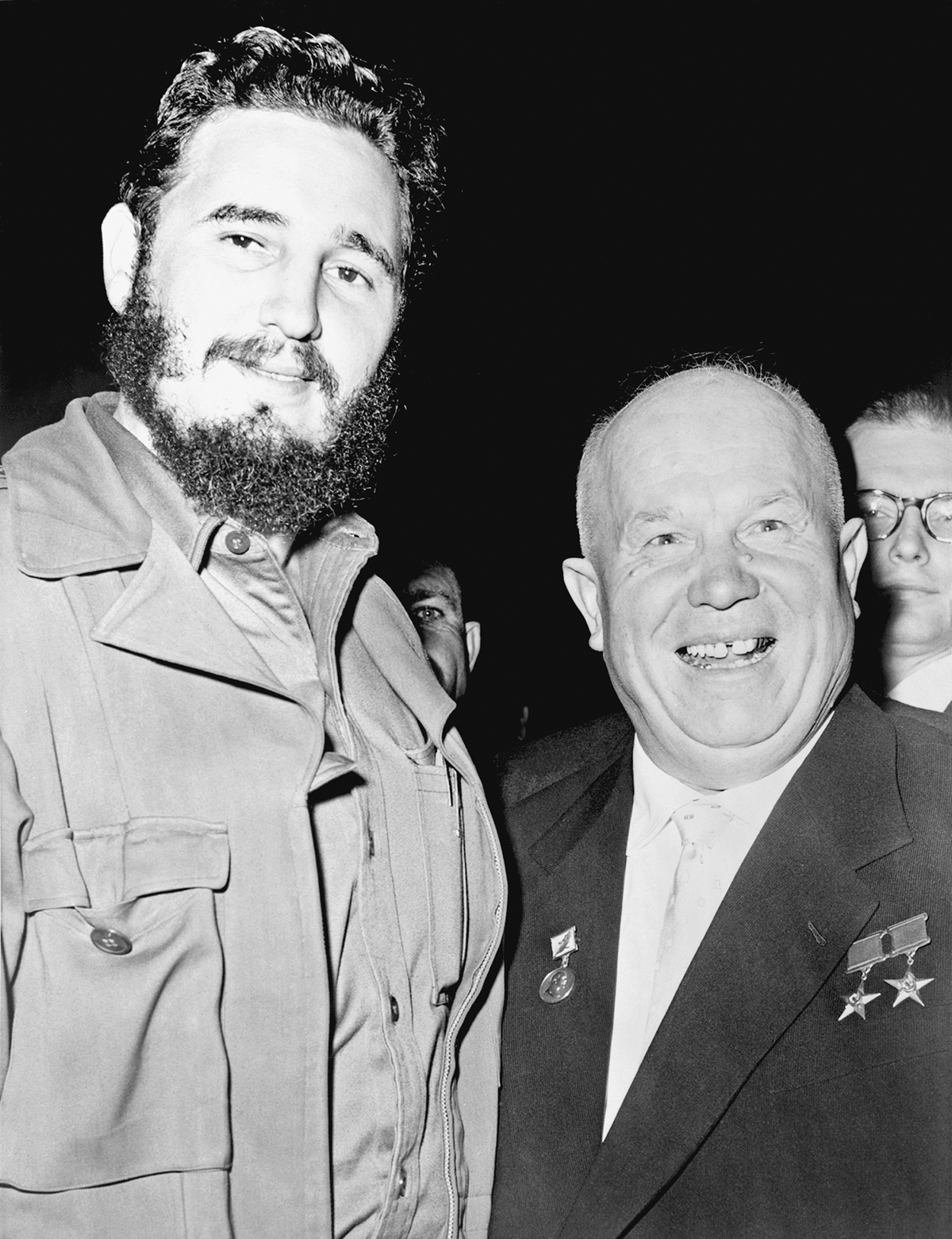
Fidel Castro with Nikita Khrushchev. The Cuban leader’s closeness to the Soviet Union led President Kennedy to put Lansdale in charge of Operation Mongoose to overthrow his regime. (Image Works)
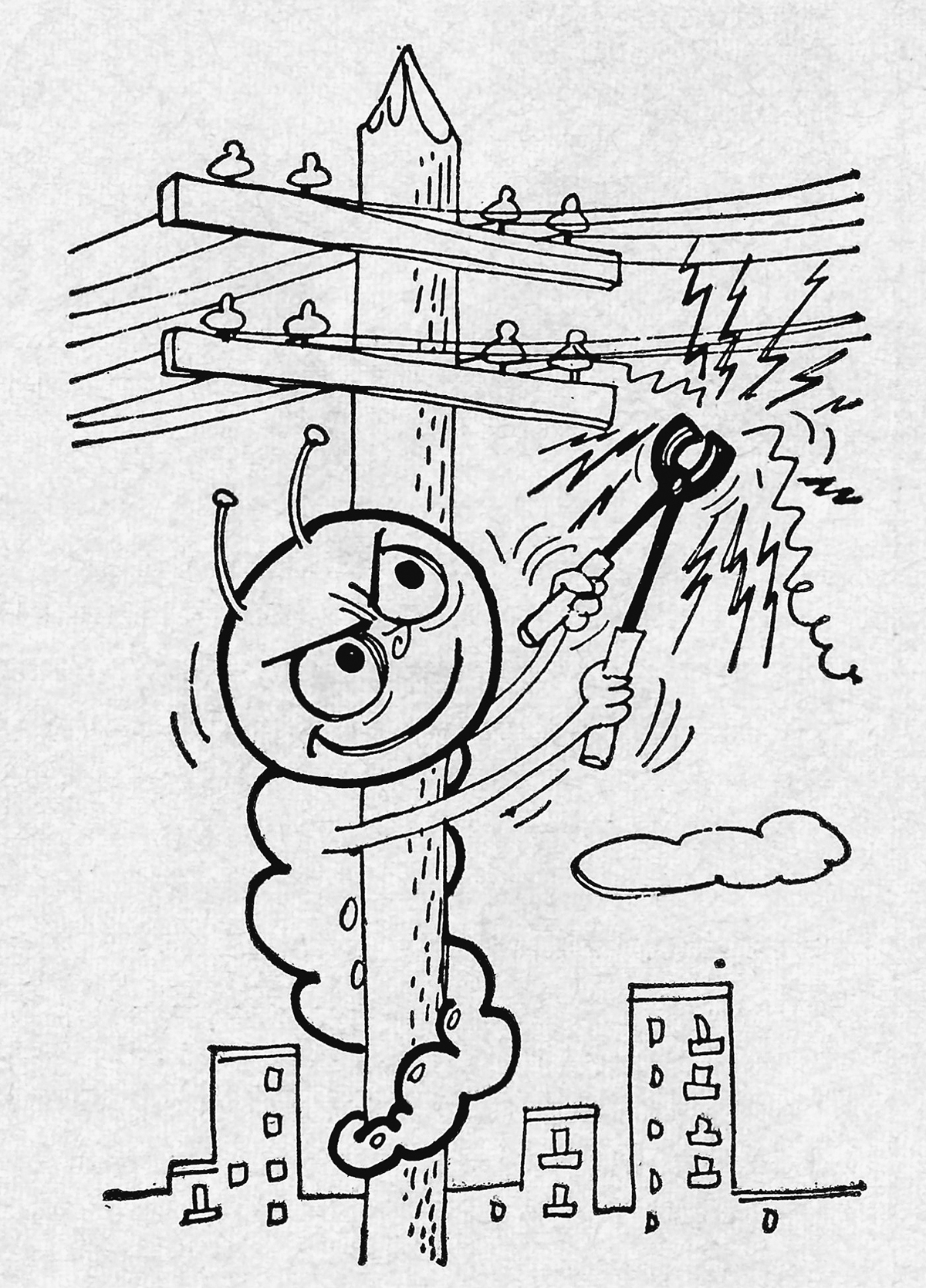
Gusano Libre (Free Worm), a cartoon image that the CIA concocted, at Lansdale’s instigation, as a symbol of resistance to Castro. The CIA planned to deliver Gusano Libre “pins, armbands, seals, pencils, balloons, etc.” to Cuba via helium-filled balloons. (NARA)
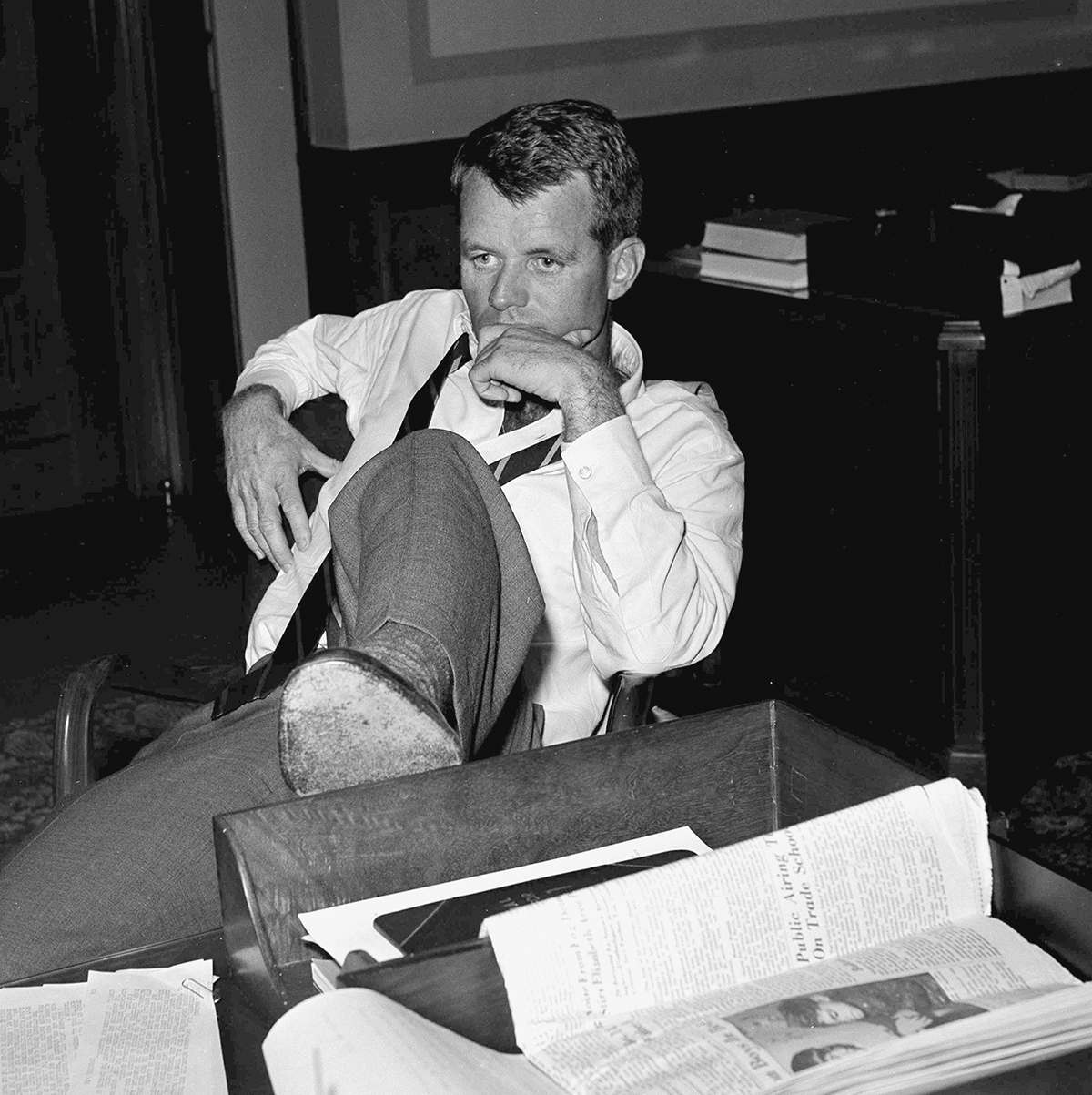
Attorney General Robert F. Kennedy was a relentless taskmaster. He told Lansdale, “Let’s get the hell on with it. The President wants some action, right now.” Lansdale’s failure to topple Castro helped to sour the Kennedys on him. (AP)
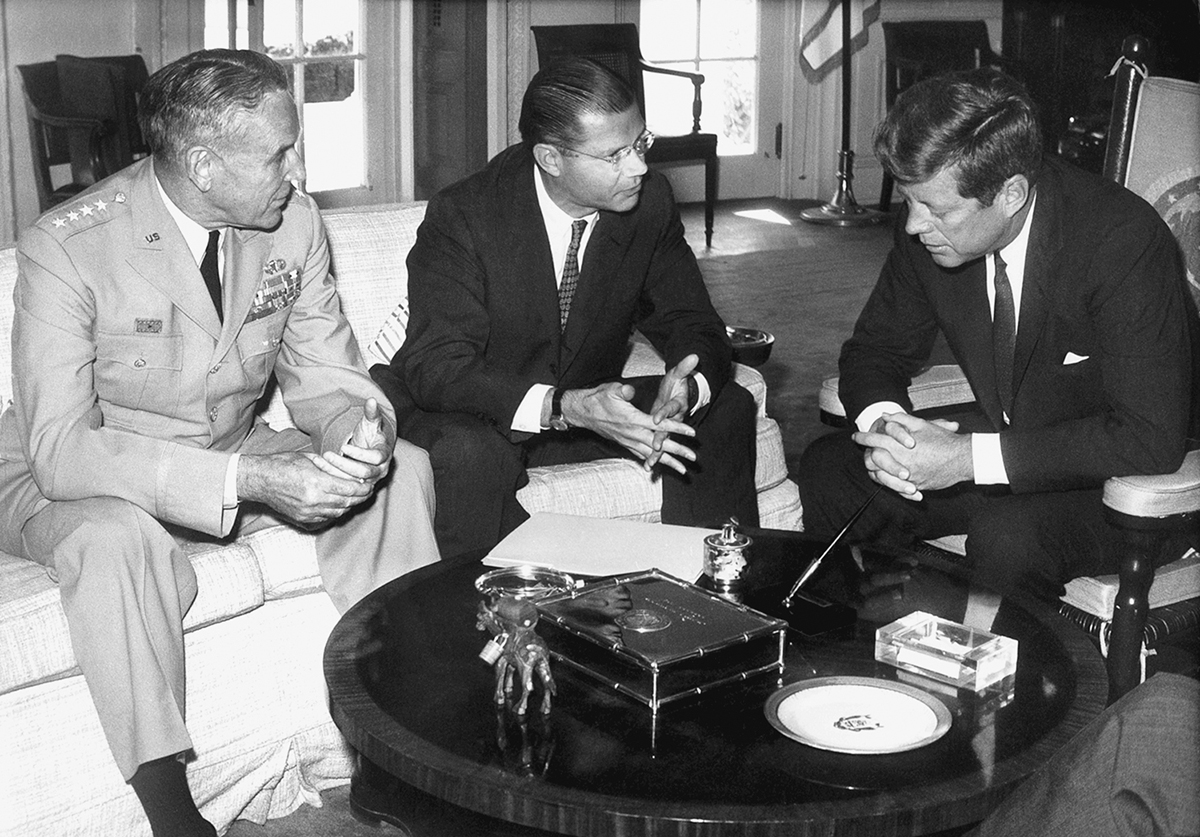
General Maxwell Taylor and Secretary of Defense Robert McNamara confer with President John F. Kennedy. Lansdale did not see eye to eye with the more conventionally minded Taylor and McNamara about how to fight the Vietcong. But he did convince Kennedy to focus on the conflict early in his administration. (Image Works)
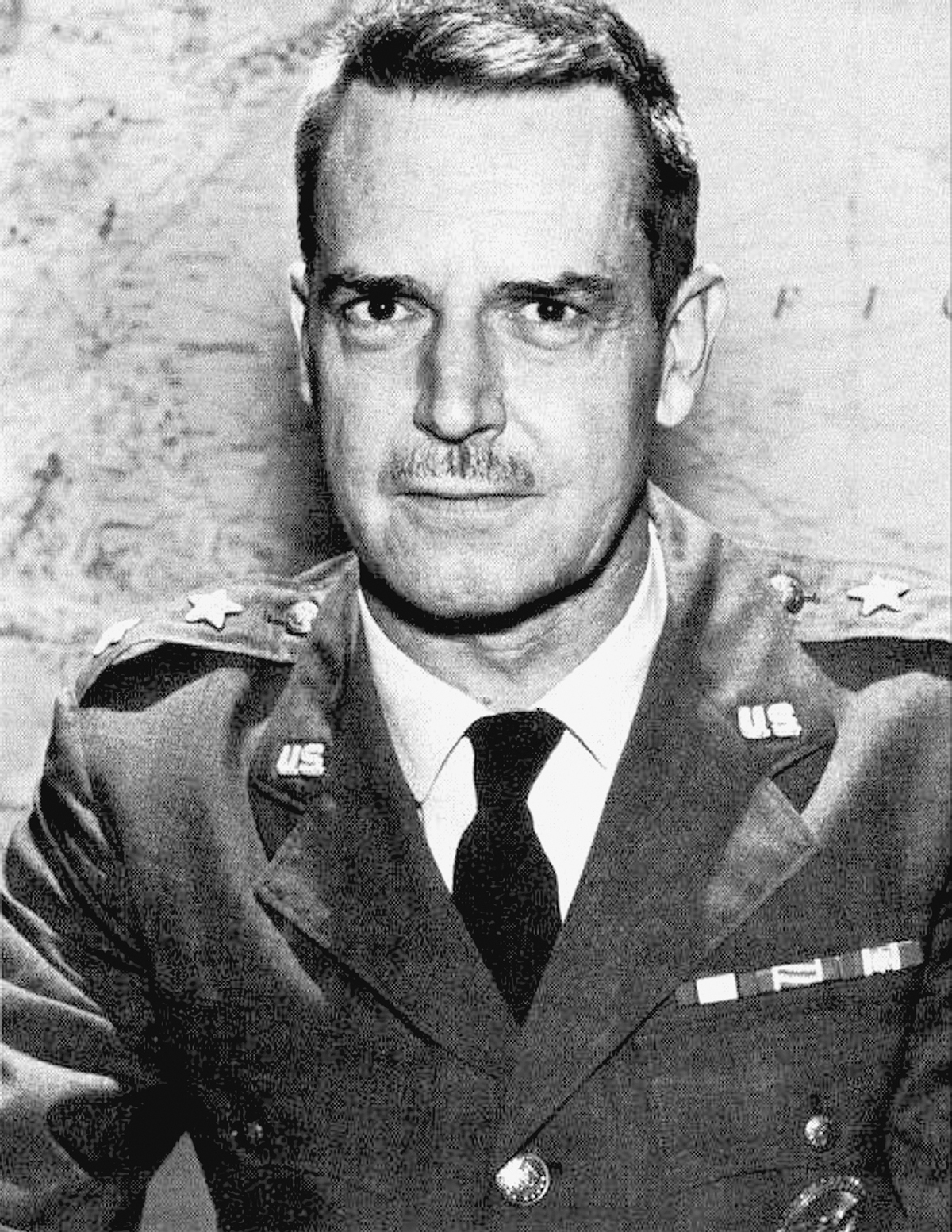
Major General Edward G. Lansdale in 1963, shortly before his retirement from the Pentagon. (Image Works)
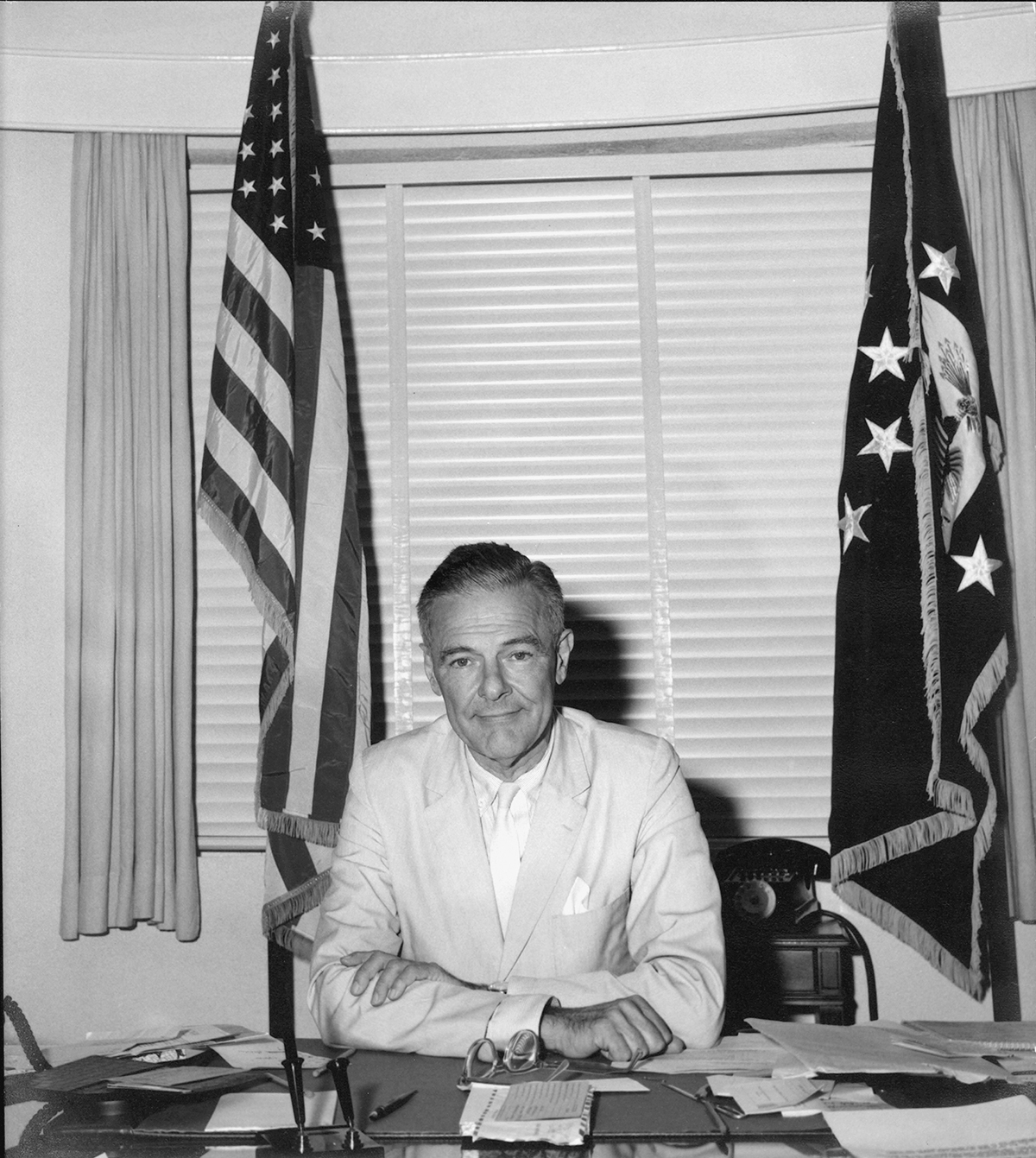
Henry Cabot Lodge Jr., the patrician American ambassador who supported the overthrow of Ngo Dinh Diem in 1963 and returned for another tour, 1965–66. Although Lodge brought Lansdale back to Vietnam, he never gave him any real power. (MSFRIC)

Ellsworth Bunker replaced Lodge in 1967 and stayed until 1973. Lansdale trusted and liked Bunker more than Lodge, but Bunker did not grant him any more authority. (MSFRIC)
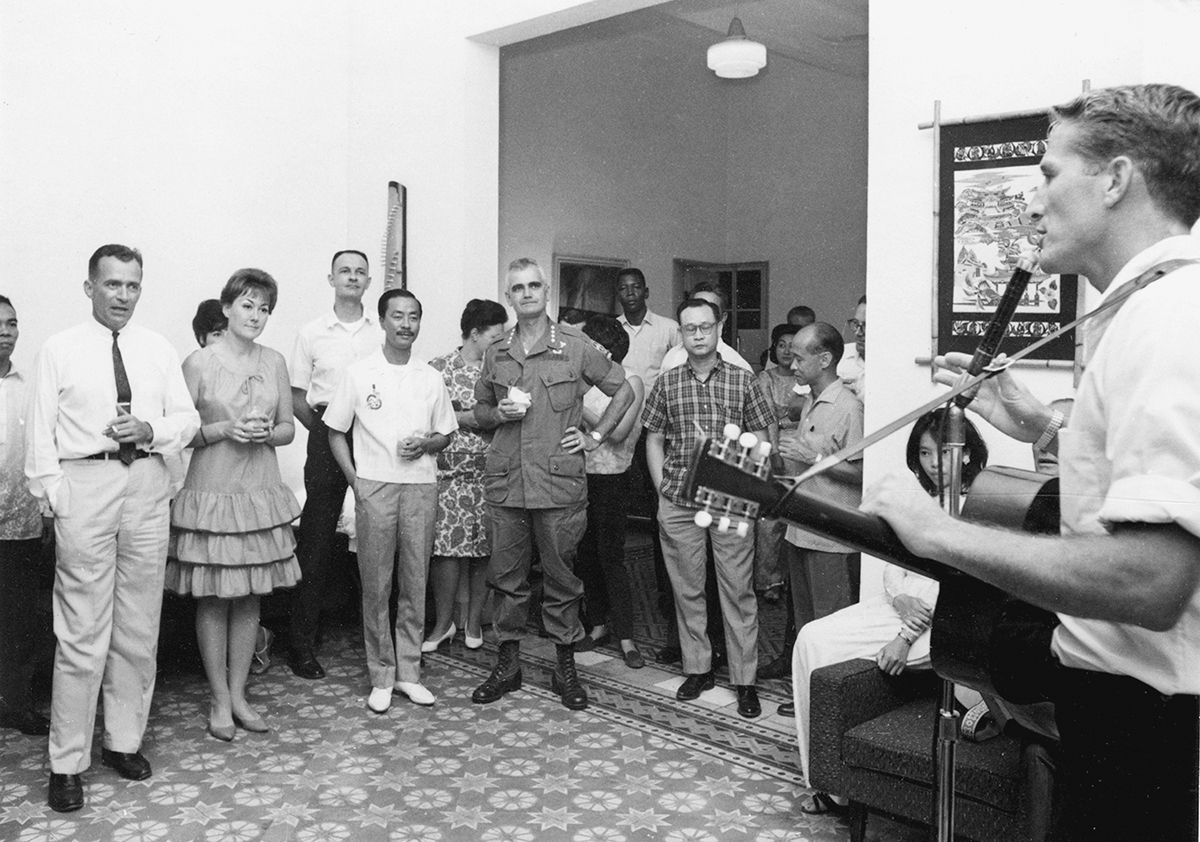
Lansdale held regular parties at his house in Saigon to bring Americans and Vietnamese together. Here Nguyen Cao Ky and General William Westmoreland listen to folk singing. (HI)
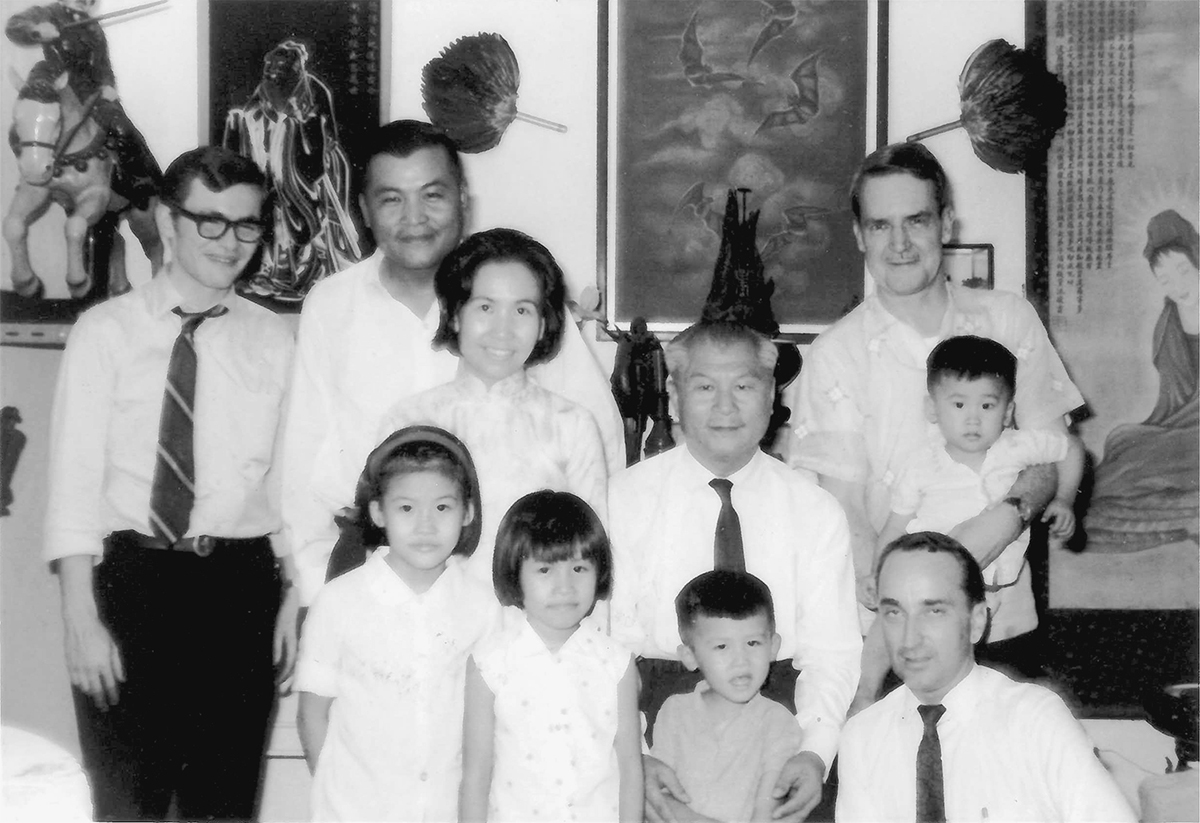
Lansdale poses in 1967 with General Nguyen Duc Thang (second from left) and his family. Lansdale aide Charlie Sweet is at far left, Calvin Mehlert at far right. Lansdale hoped that the honest and effective Thang could become a Vietnamese version of Ramon Magsaysay. (RPPP)
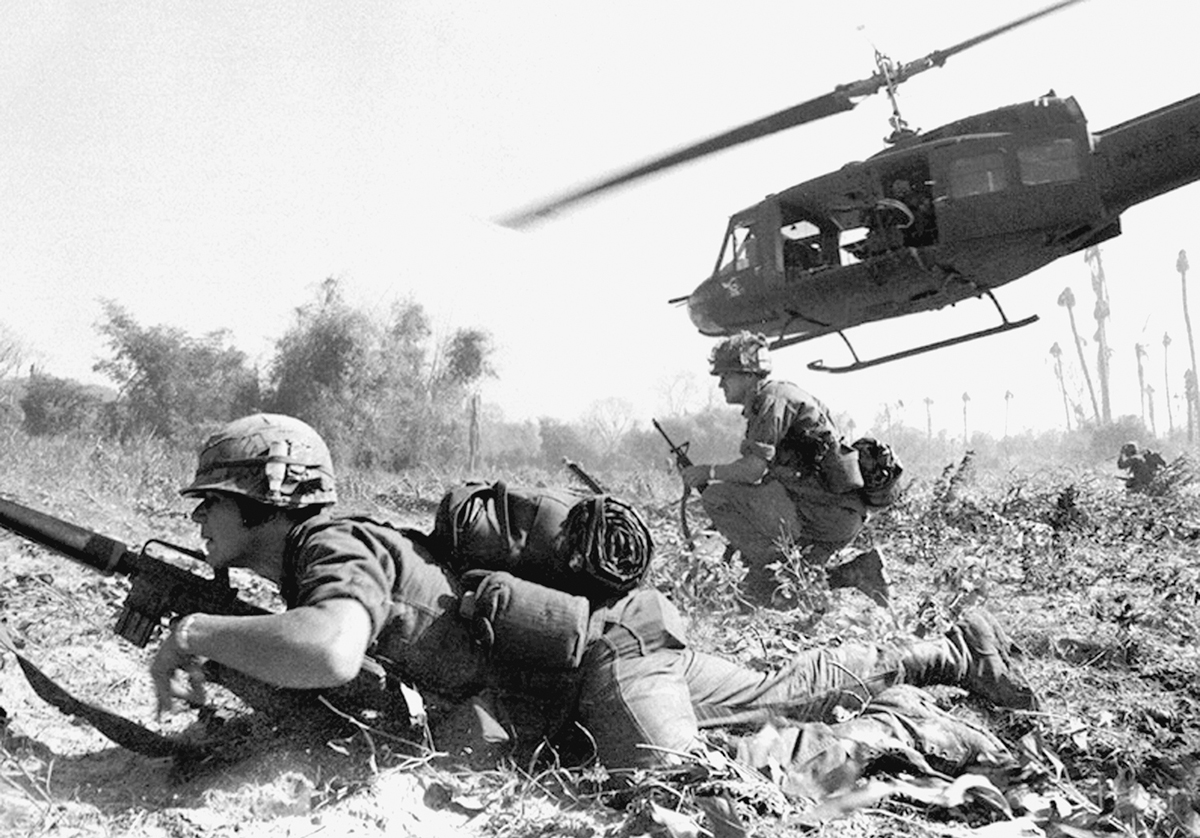
Everything that Lansdale tried to achieve in his second tour in Vietnam, 1965–68, was ultimately inconsequential compared to the “big unit” war fought by the American military. Lansdale warned that the enemy could not be bombed into submission, but he was ignored. (Image Works)
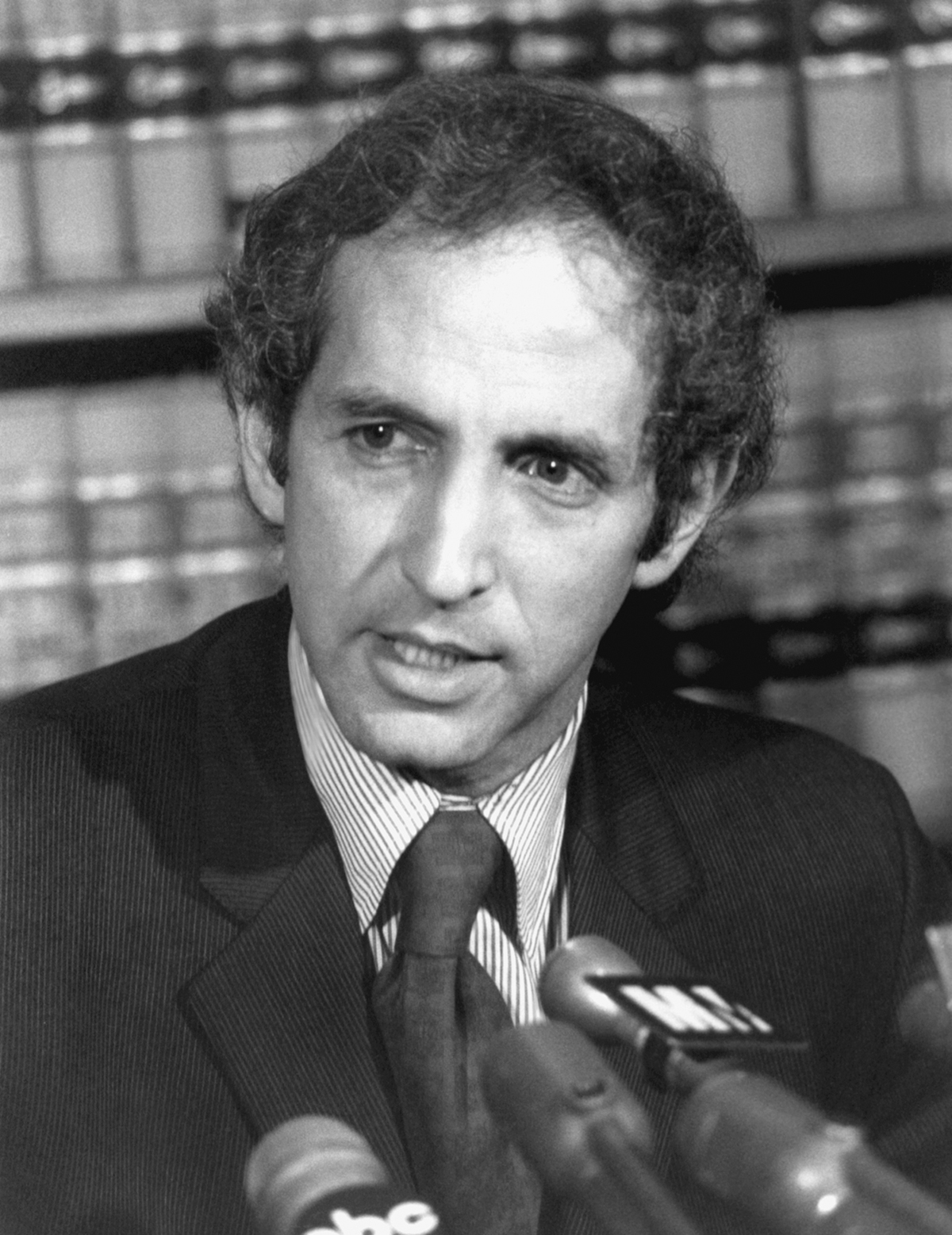
The former RAND analyst Daniel Ellsberg worked for Lansdale in Vietnam before leaking the Pentagon Papers in 1971. Lansdale “was the leader of the cult and I was a member of that cult,” he later said. (AP)
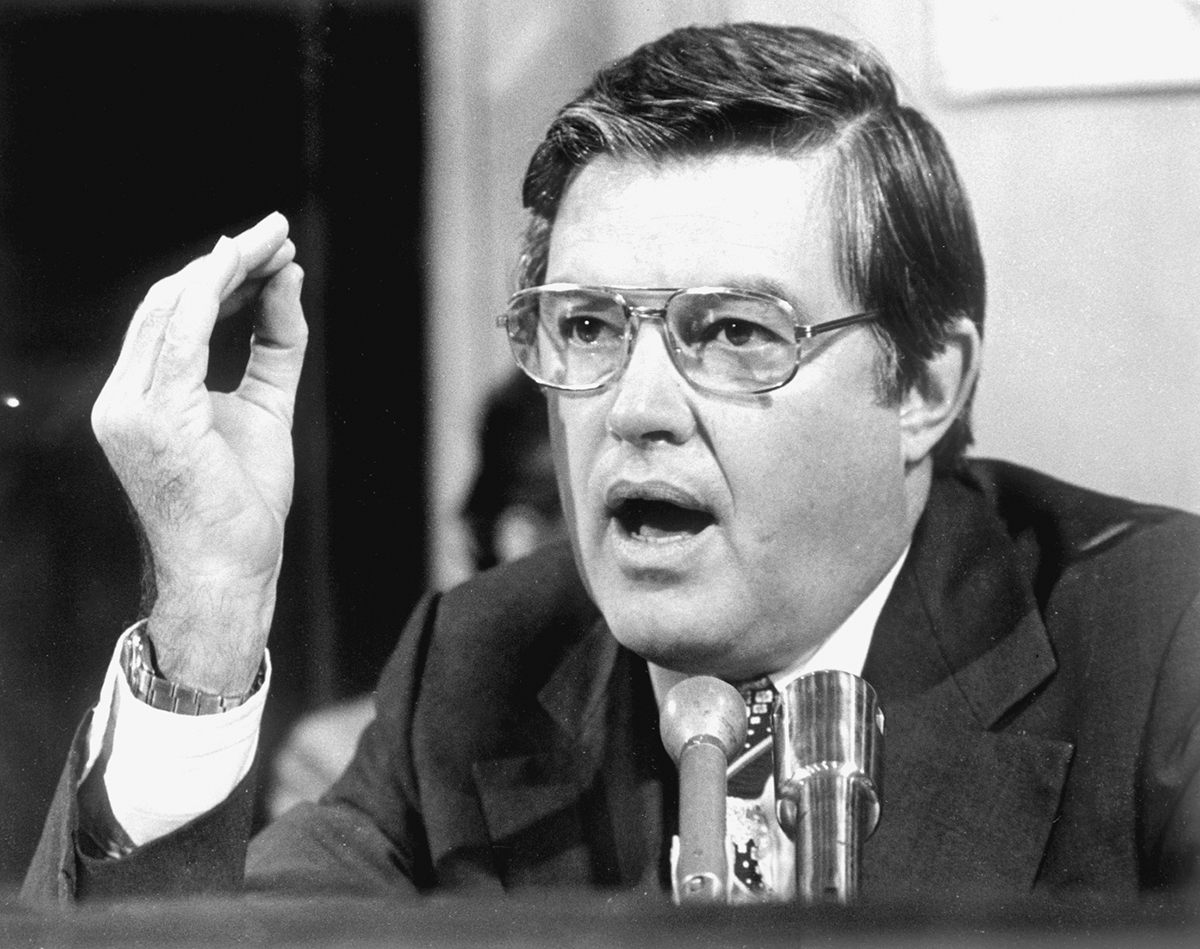
Senator Frank Church led an investigation into the CIA in 1975. Testifying to the Church Committee “has all the charm and fun of going to a dentist to have root canals,” Lansdale complained. (Getty)
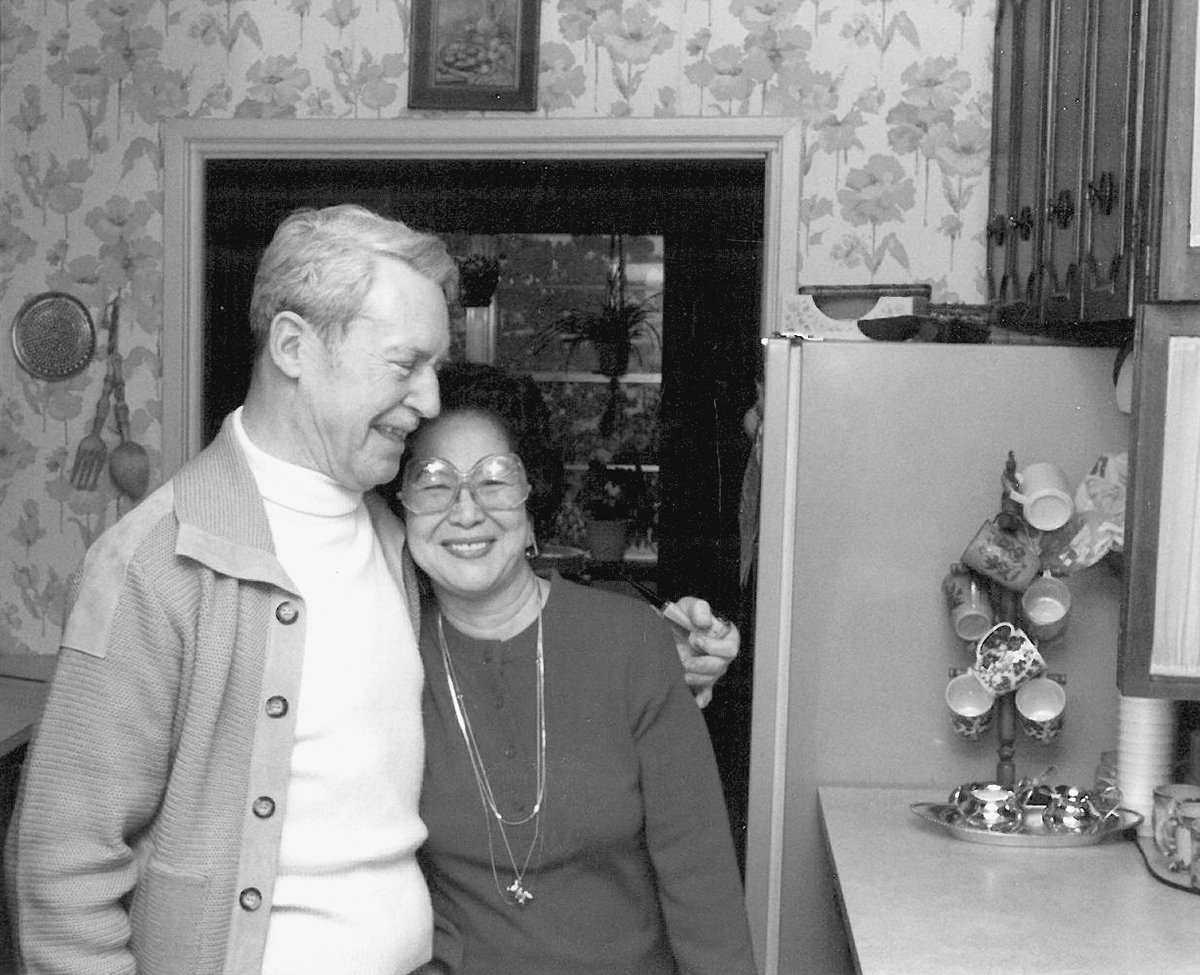
Following Helen’s death, Pat Kelly and Edward Lansdale married on the Fourth of July, 1973, and lived happily ever after. Here they are in the kitchen of their McLean, Virginia, home in 1979. (ECLPP)